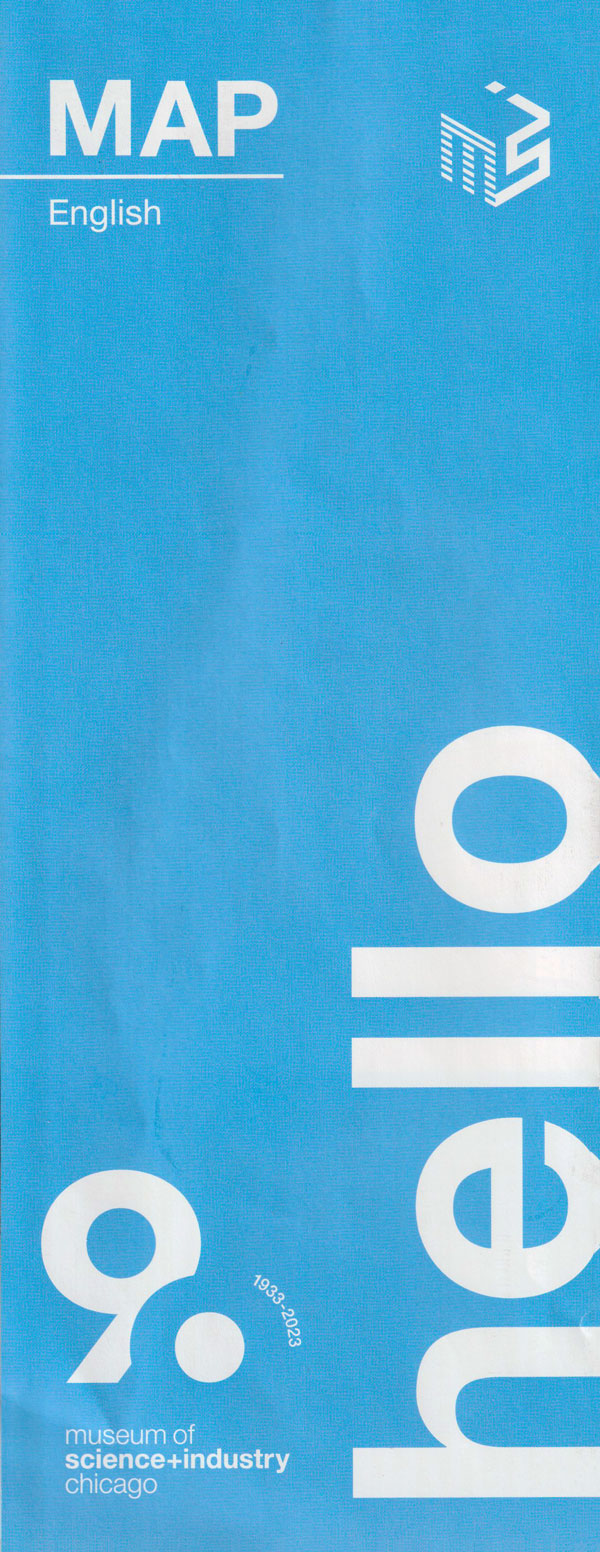
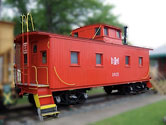




 Museum of Science and Industry, Chicago
Museum of Science and Industry, Chicago

Chicago, Il / Mar 2023 / RWH

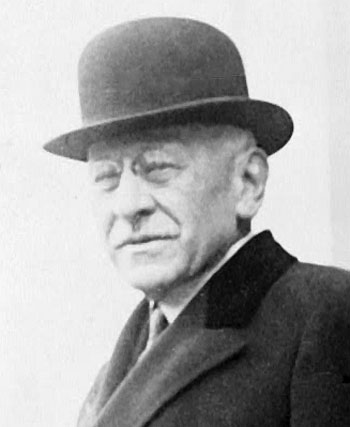 It was a moment of inspiration during a family vacation nearly a century ago. Watching his child enthralled by an interactive museum display, our founder Julius Rosenwald resolved to share that experience with Chicago. Since opening in 1933, the Museum of Science and Industry, Chicago has been dedicated to inspiring the inventive genius in everyone with uniquely interactive experiences. We've hosted more than 180 million guests — or about a billion moments like the one that started it all. Today, MSI is the largest science museum in the Western Hemisphere, but also works to provide these moments of discovery beyond our walls.
It was a moment of inspiration during a family vacation nearly a century ago. Watching his child enthralled by an interactive museum display, our founder Julius Rosenwald resolved to share that experience with Chicago. Since opening in 1933, the Museum of Science and Industry, Chicago has been dedicated to inspiring the inventive genius in everyone with uniquely interactive experiences. We've hosted more than 180 million guests — or about a billion moments like the one that started it all. Today, MSI is the largest science museum in the Western Hemisphere, but also works to provide these moments of discovery beyond our walls.

 he Museum of Science and Industry is a science museum located in Chicago, Illinois, in Jackson Park, in the Hyde Park neighborhood between Lake Michigan and The University of Chicago. It is housed in the former Palace of Fine Arts from the 1893 World's Columbian Exposition. Initially endowed by Julius Rosenwald, the Sears, Roebuck & Company president and philanthropist, it was supported by the Commercial Club of Chicago and opened in 1933 during the Century of Progress Exposition. Today the museum's many exhibits include a Transportation Gallery featuring 2 locomotives, a cable car, several airplanes, 2 automobiles, and a 3500 square foot model railroad. Locomotive #999 is considered the first machine ever to break the 100 mph speed barrier.
he Museum of Science and Industry is a science museum located in Chicago, Illinois, in Jackson Park, in the Hyde Park neighborhood between Lake Michigan and The University of Chicago. It is housed in the former Palace of Fine Arts from the 1893 World's Columbian Exposition. Initially endowed by Julius Rosenwald, the Sears, Roebuck & Company president and philanthropist, it was supported by the Commercial Club of Chicago and opened in 1933 during the Century of Progress Exposition. Today the museum's many exhibits include a Transportation Gallery featuring 2 locomotives, a cable car, several airplanes, 2 automobiles, and a 3500 square foot model railroad. Locomotive #999 is considered the first machine ever to break the 100 mph speed barrier.

MSIC image / collection
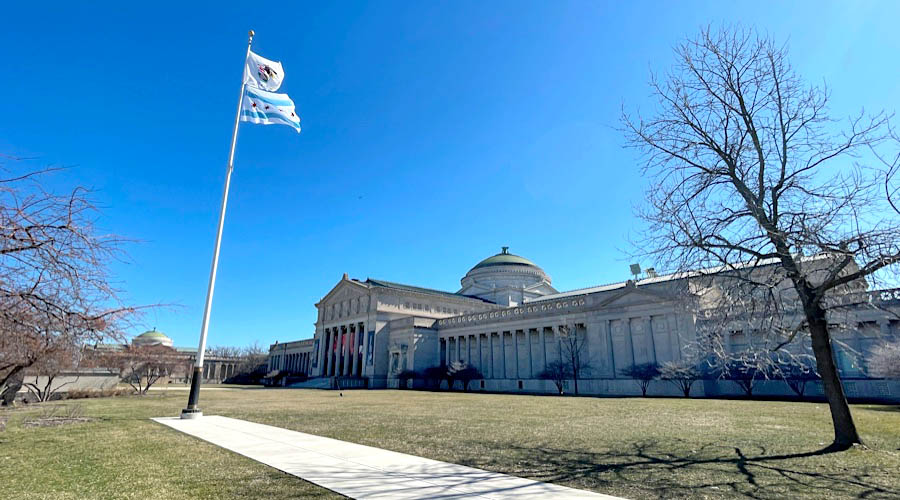
Chicago, Il / Mar 2023 / RWH

collection / adapted RWH

Click to see the Museum of Science and Industry plotted on a Google Maps page
 The Queen of Speed
The Queen of Speed

 UNCOMMON or UNUSUAL locomotive
UNCOMMON or UNUSUAL locomotive
New York Central & Hudson River #999
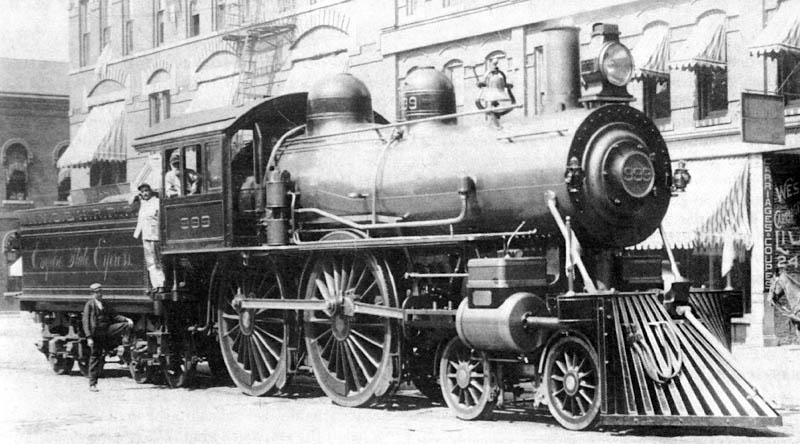
New York Central & Hudson River #999
Wikipedia


New York Central & Hudson River #999
to New York Cen & Hudson River #1086
to New York Central #999
to Museum of Science & Industry, 1961
displayed with 70" drivers
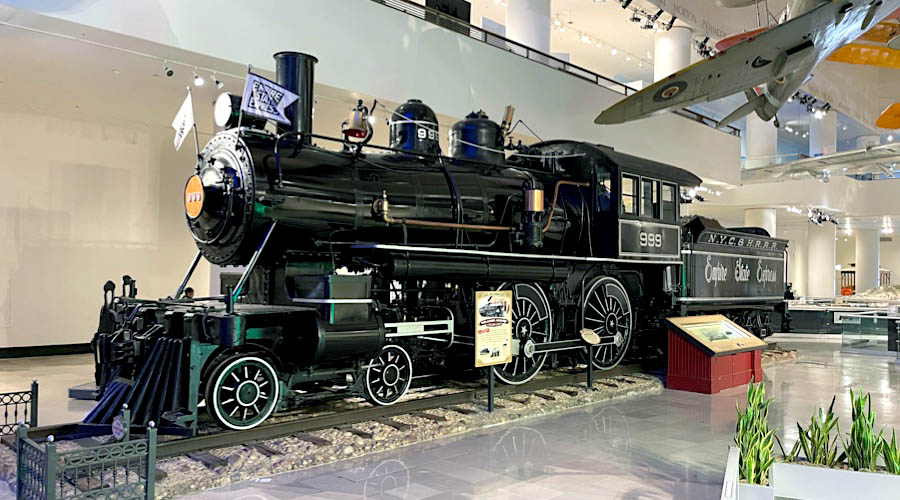
Chicago, Il / Mar 2023 / RWH
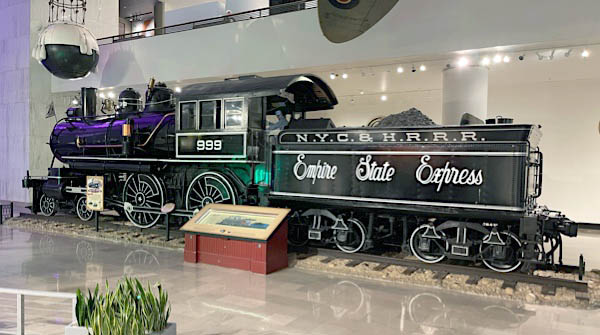
Chicago, Il / Mar 2023 / RWH
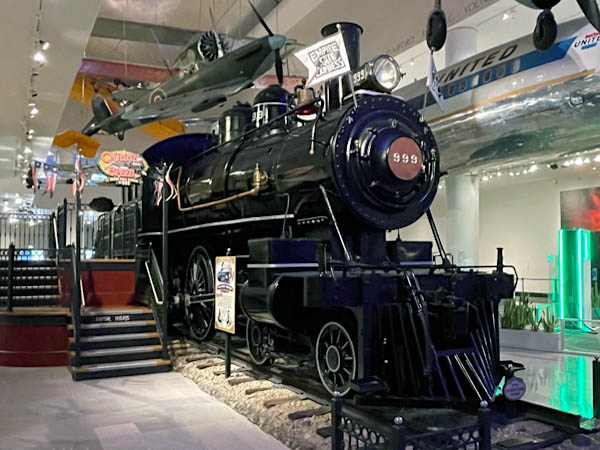
Mar 2023 / RWH
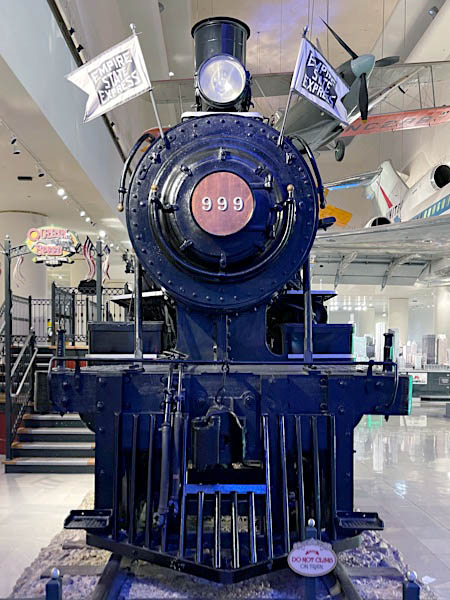
Mar 2023 / RWH
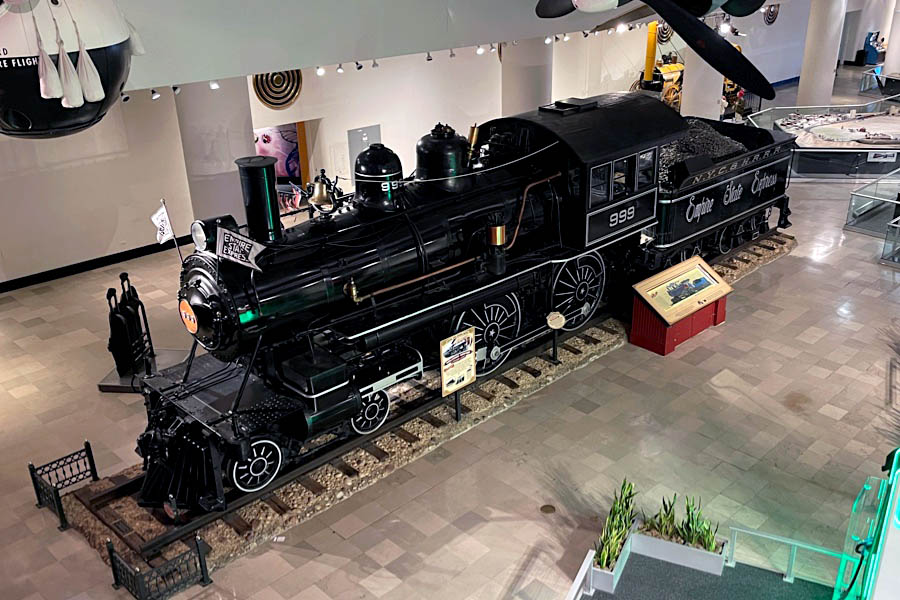
Chicago, Il / Mar 2023 / RWH

Chicago, Il / Mar 2023 / RWH

from The Steam Locomotive Directory of North America - Volume 1 - J. David Conrad / collection
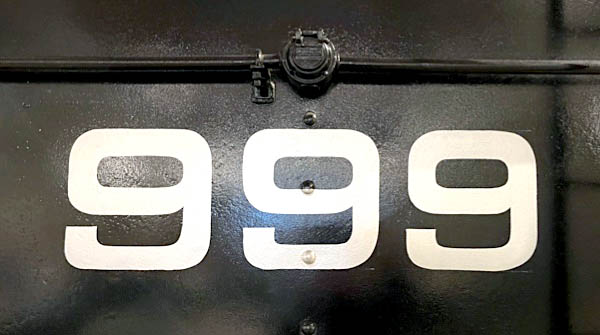
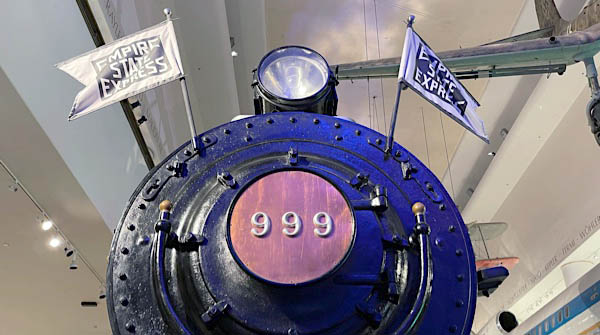
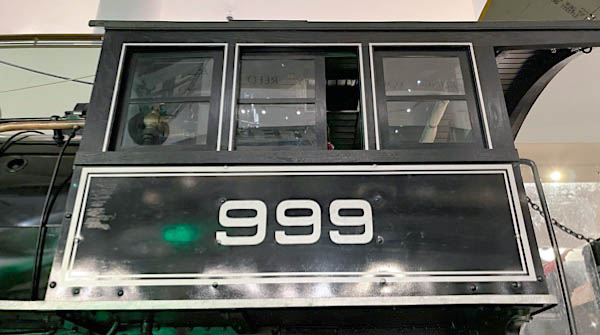

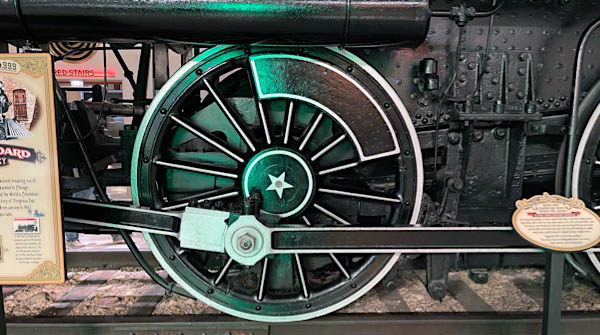
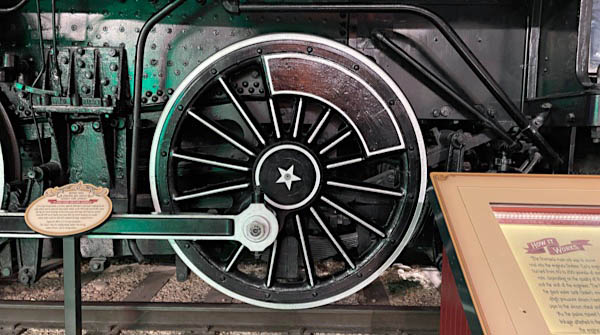

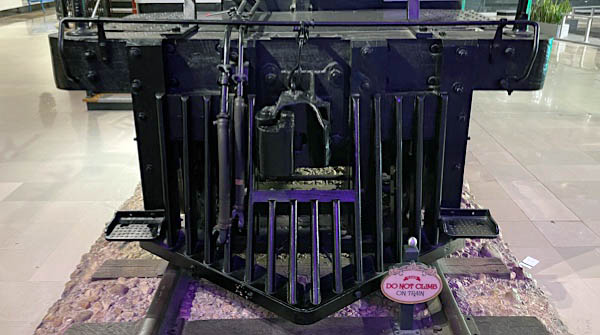

Mar 2023 / RWH

The 999 Steam Locomotive was a new concept in speed locomotives. Engine 999 was assigned to haul the New York Central Railroad's brilliant new passenger train, the Empire State Express. On May 10, 1893, the 999 became the fastest land vehicle when it reached a record speed of 112.5 mph. The 999 maintained the record for a decade.
Designed by William Buchanan and manufactured by the New York Central Railroad in West Albany, New York in 1893, the 999 was commissioned to haul the Empire State Express, which ran from Syracuse to Buffalo. This relatively smooth run and the 999's cutting-edge design gave the new locomotive an opportunity to make history.
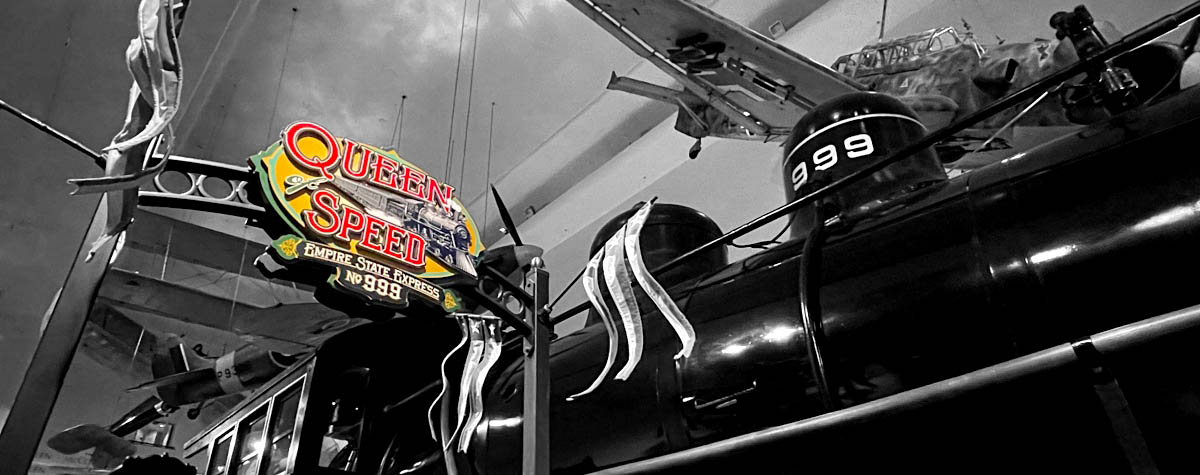 Following its record-setting run, "The World's Fastest Locomotive" toured the country and was displayed at the 1893 World's Columbian Exposition in Chicago. After the Exposition, the 999 continued to provide passenger and freight service for many years. The famous locomotive returned to Chicago in 1933 for the Century of Progress World's Fair and again from 1948-49 for the Chicago Railroad Fair.
Following its record-setting run, "The World's Fastest Locomotive" toured the country and was displayed at the 1893 World's Columbian Exposition in Chicago. After the Exposition, the 999 continued to provide passenger and freight service for many years. The famous locomotive returned to Chicago in 1933 for the Century of Progress World's Fair and again from 1948-49 for the Chicago Railroad Fair.
Eventually, technological innovation in the railroad industry limited the 999's use. In May of 1952, following a reenactment of its record-breaking run, the 999 was retired from service.
In 1962, the Museum of Science and Industry acquired the 999 and displayed it outside. Following a complete restoration from June to October 1993, the 999 was brought inside to its present location in November 1993.
Museum of Science and Industry, Chicago / image RWH
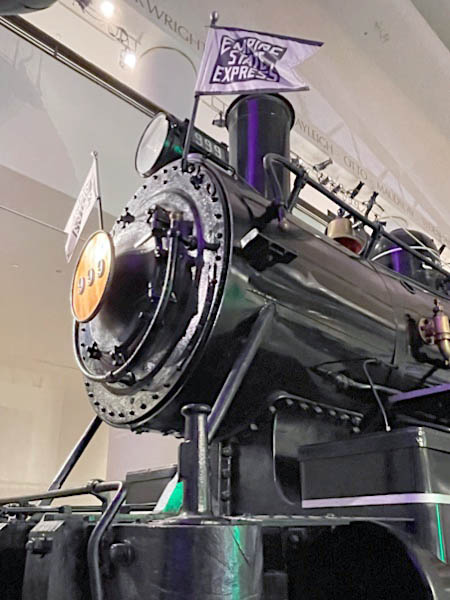
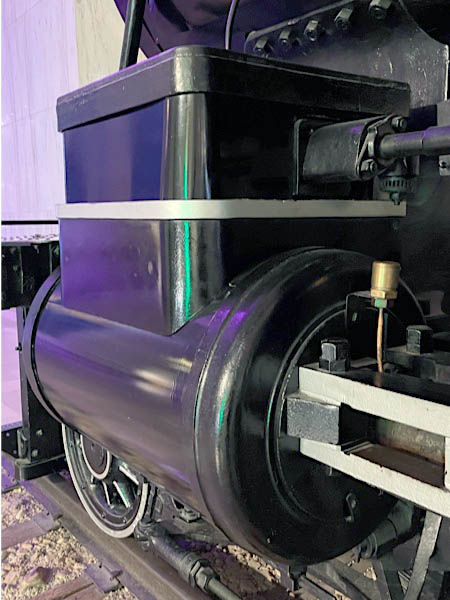
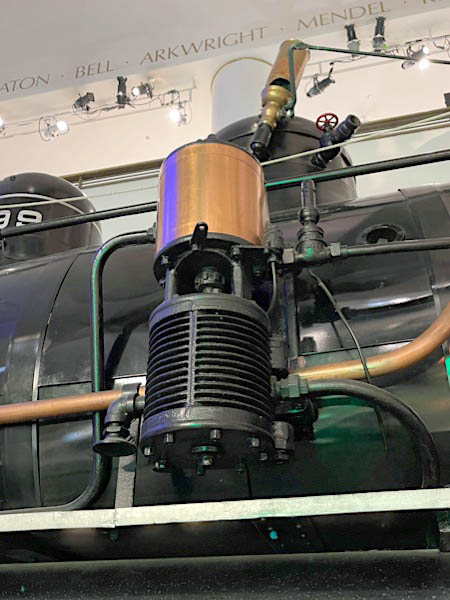
Mar 2023 / RWH
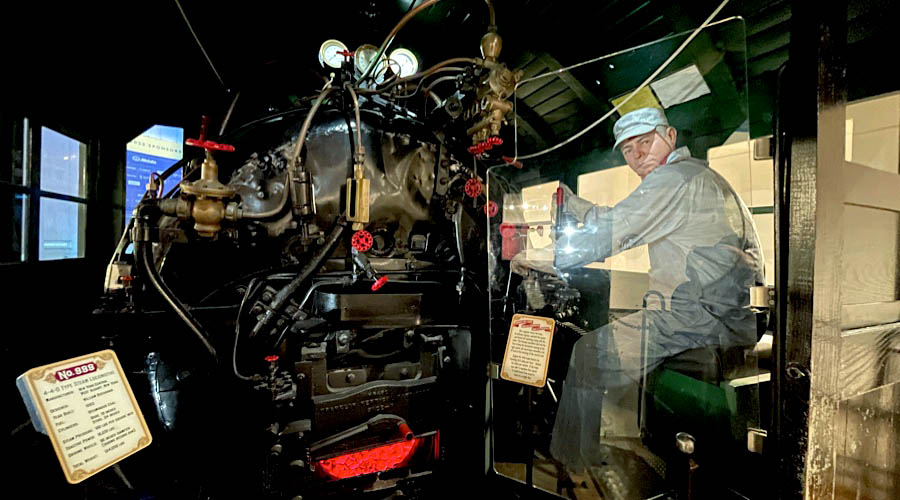
Mar 2023 / RWH

Mar 2023 / RWH
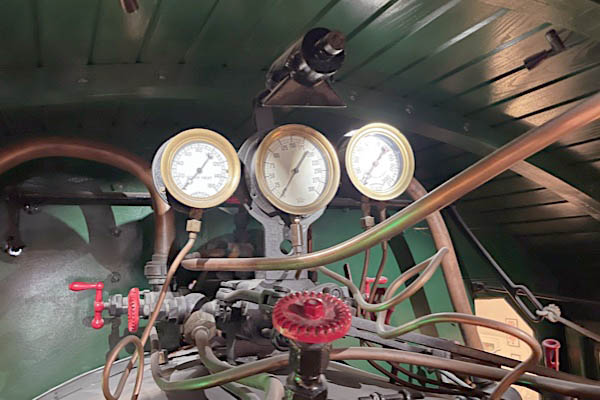
Mar 2023 / RWH

 n 1876 the fastest scheduled railroad service from New York City to San Francisco took seven days. This problem sparked the desire for improved transportation and greater speed which resulted in the creation of a steam locomotive named the Empire State Express No. 999. William Buchanan, a master mechanic and superintendent of motive power on the West Albany Shops, drew plans for what was to become the world's most beautiful locomotive ever built. The construction of this 37 feet long engine was by hand with chisels and hammers and was the first of its kind to have brakes applied to the front trucks. Everything about the No. 999 was designed for speed with no pains spared for beauty. The bands, pipes and trimming were highly polished; the brass shone like a mirror; the cap was beautifully painted and across the tender (coal storage car) was written in 2.5 foot high gold leaf lettering"Empire State Express". Hand polishing provided a black satin finish and the 86-inch drive wheels gave the No. 999 a powerful appearance.
n 1876 the fastest scheduled railroad service from New York City to San Francisco took seven days. This problem sparked the desire for improved transportation and greater speed which resulted in the creation of a steam locomotive named the Empire State Express No. 999. William Buchanan, a master mechanic and superintendent of motive power on the West Albany Shops, drew plans for what was to become the world's most beautiful locomotive ever built. The construction of this 37 feet long engine was by hand with chisels and hammers and was the first of its kind to have brakes applied to the front trucks. Everything about the No. 999 was designed for speed with no pains spared for beauty. The bands, pipes and trimming were highly polished; the brass shone like a mirror; the cap was beautifully painted and across the tender (coal storage car) was written in 2.5 foot high gold leaf lettering"Empire State Express". Hand polishing provided a black satin finish and the 86-inch drive wheels gave the No. 999 a powerful appearance.
 As the 1893 World's Fair in Chicago approached every country was planning to exhibit the fastest engine. On May 9, 1893 Charlie Hogan, from Batavia, an experienced and dependable engine pilot took over the untested locomotive at Rochester and was 25 minutes late due to boiler trouble. While passing through Batavia, Hogan kept opening the throttle and when the No. 999 arrived in Buffalo, it had run the 69 miles from Rochester in 68 minutes. The estimated speed was 102 miles per hour. Word spread of this marvelous run and the next morning when Hogan took the No. 999 back to Syracuse crowds turned out to see the "Queen of Speed". In the afternoon the No. 999 again headed westward towards Buffalo but this time railroad officials were on board to record the speed. Between Batavia and Corfu, Engineer Hogan opened the throttle all the way and the No. 999 responded with 112.5 miles per hour by the time it sped through the Village of Crittenden, in Erie County. The speed was recorded by train officials and newspaper reporters who clocked off mile posts using hand-held stop watches. In the hands of a great engineer and a competent fireman, who fed coal to the furnace, the No. 999 marked its place in history as being the first thing on wheels to go over 100 miles per hour and had set a "world record".
As the 1893 World's Fair in Chicago approached every country was planning to exhibit the fastest engine. On May 9, 1893 Charlie Hogan, from Batavia, an experienced and dependable engine pilot took over the untested locomotive at Rochester and was 25 minutes late due to boiler trouble. While passing through Batavia, Hogan kept opening the throttle and when the No. 999 arrived in Buffalo, it had run the 69 miles from Rochester in 68 minutes. The estimated speed was 102 miles per hour. Word spread of this marvelous run and the next morning when Hogan took the No. 999 back to Syracuse crowds turned out to see the "Queen of Speed". In the afternoon the No. 999 again headed westward towards Buffalo but this time railroad officials were on board to record the speed. Between Batavia and Corfu, Engineer Hogan opened the throttle all the way and the No. 999 responded with 112.5 miles per hour by the time it sped through the Village of Crittenden, in Erie County. The speed was recorded by train officials and newspaper reporters who clocked off mile posts using hand-held stop watches. In the hands of a great engineer and a competent fireman, who fed coal to the furnace, the No. 999 marked its place in history as being the first thing on wheels to go over 100 miles per hour and had set a "world record".

Mar 2023 / RWH

Mar 2023 / RWH
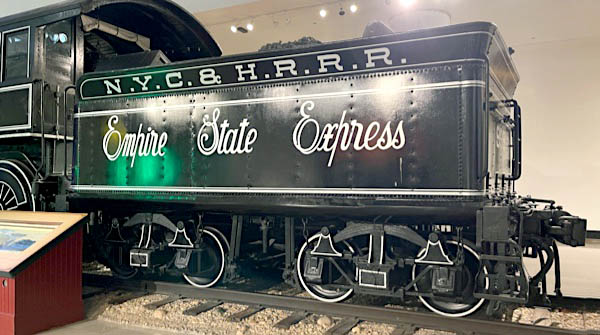
Mar 2023 / RWH
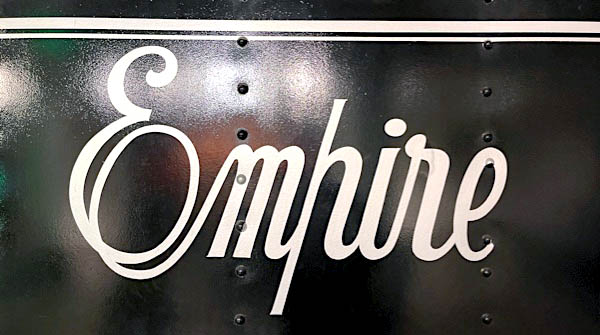
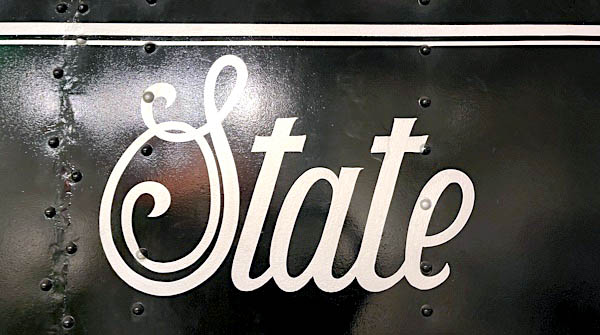
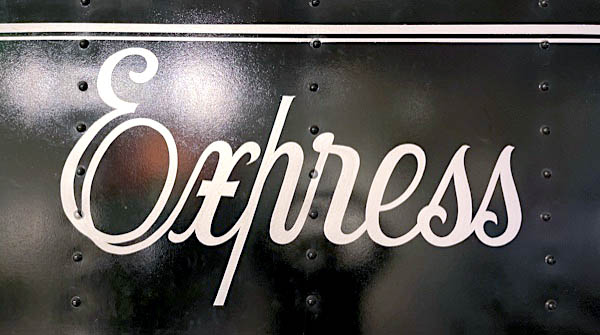
Mar 2023 / RWH
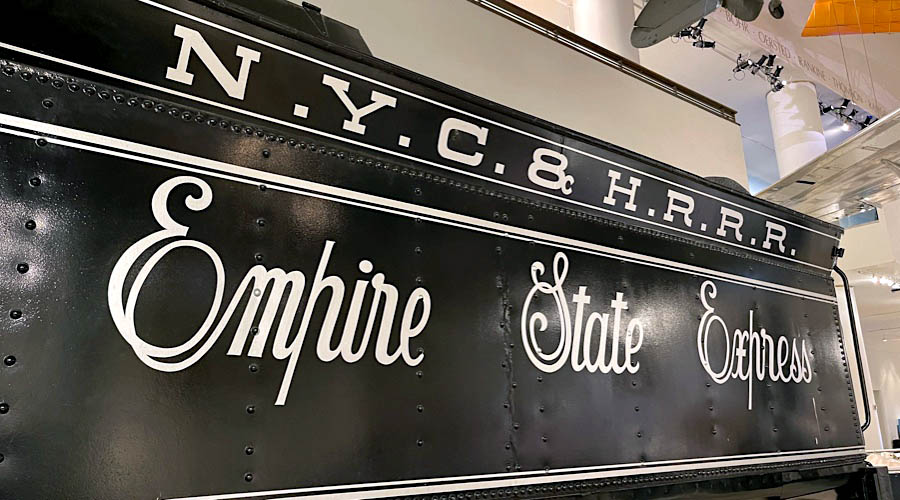
Mar 2023 / RWH
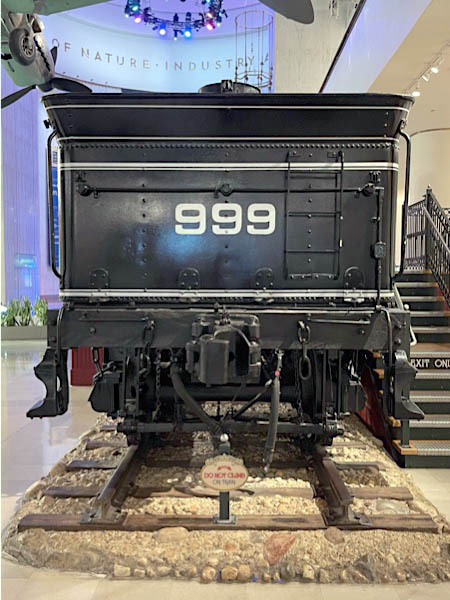
Mar 2023 / RWH
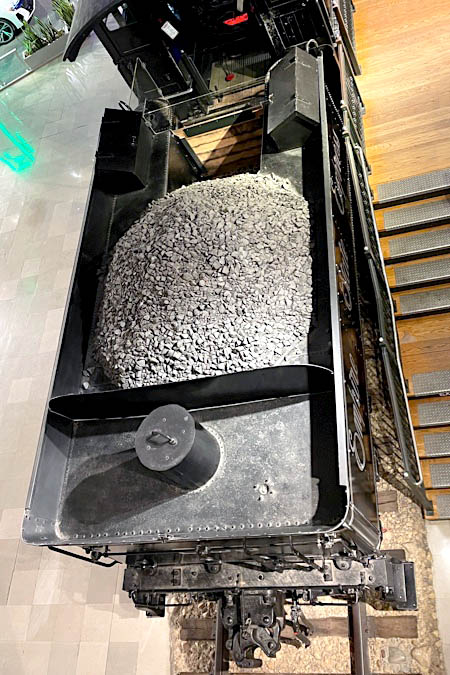
Mar 2023 / RWH
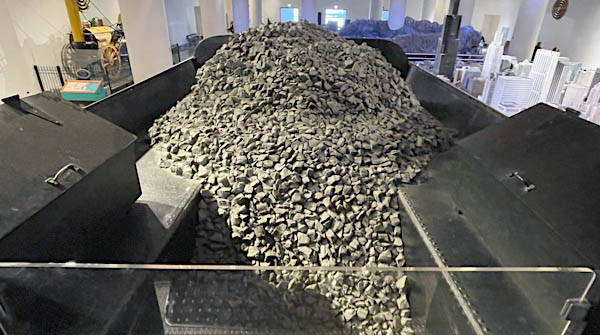
Mar 2023 / RWH
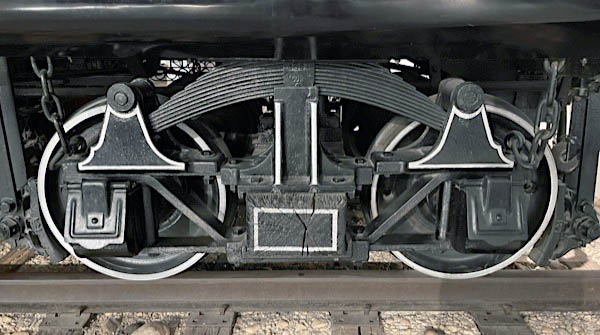
Mar 2023 / RWH
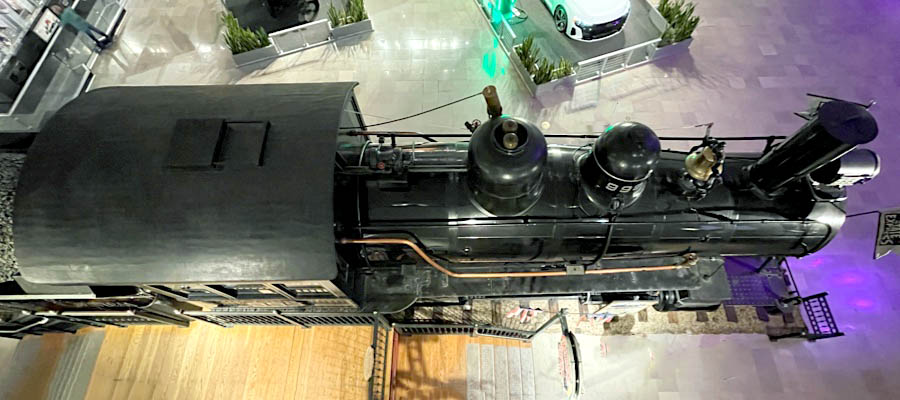
Mar 2023 / RWH
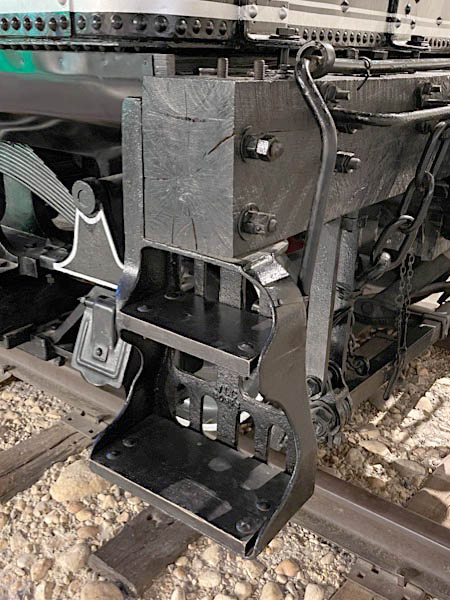
Mar 2023 / RWH
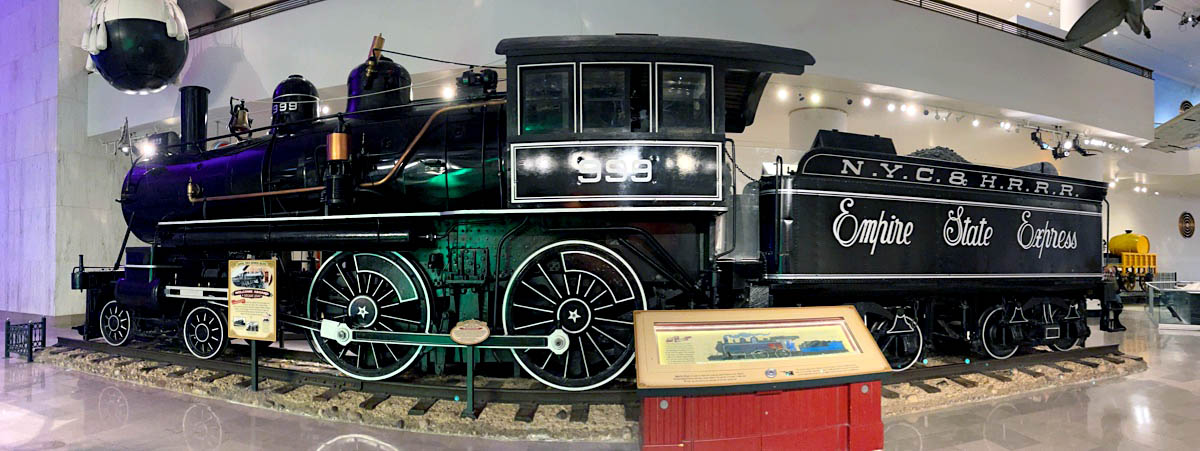
Chicago, Il / Mar 2023 / RWH
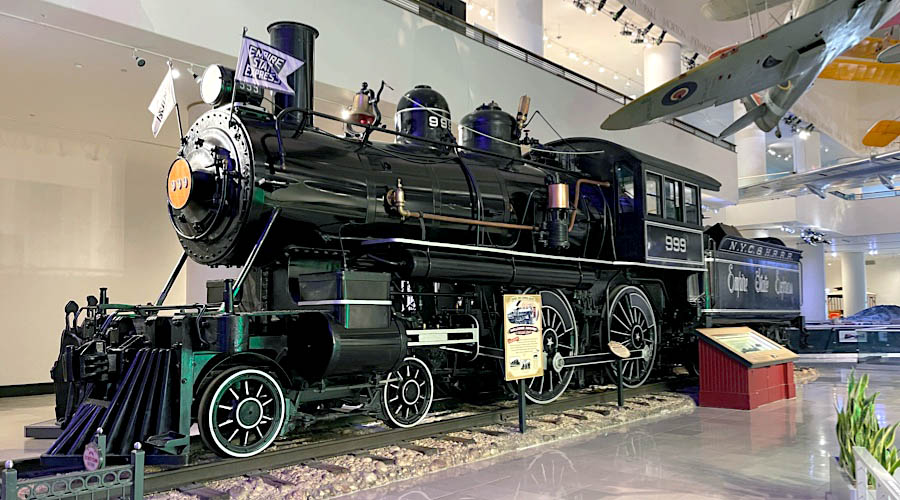
Chicago, Il / Mar 2023 / RWH
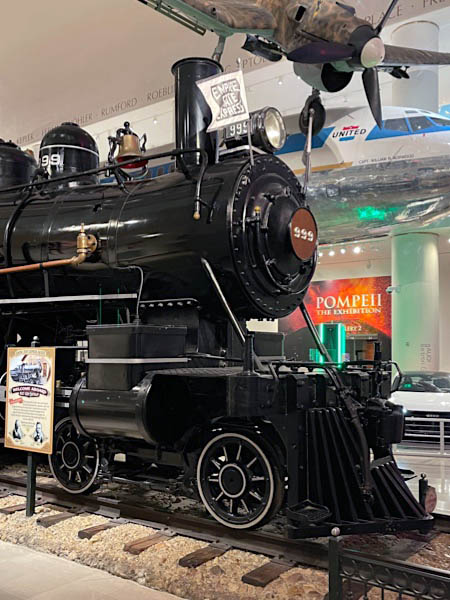
Mar 2023 / RWH
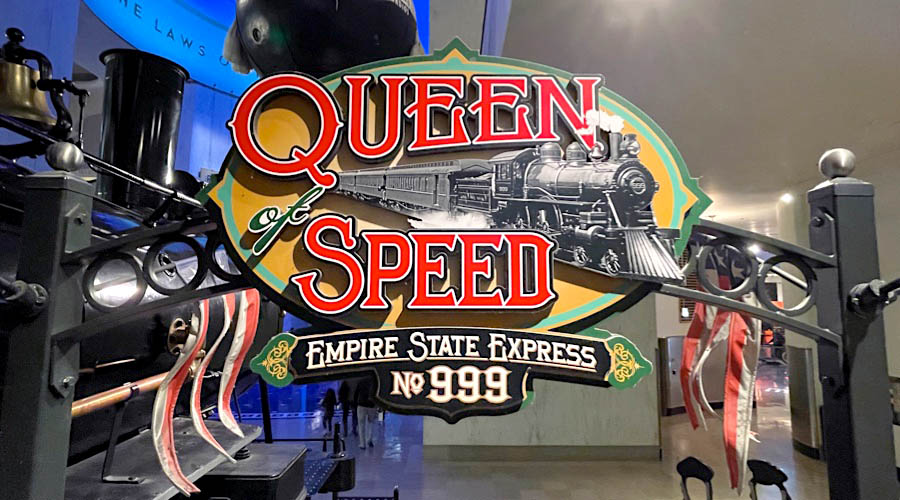
Mar 2023 / RWH
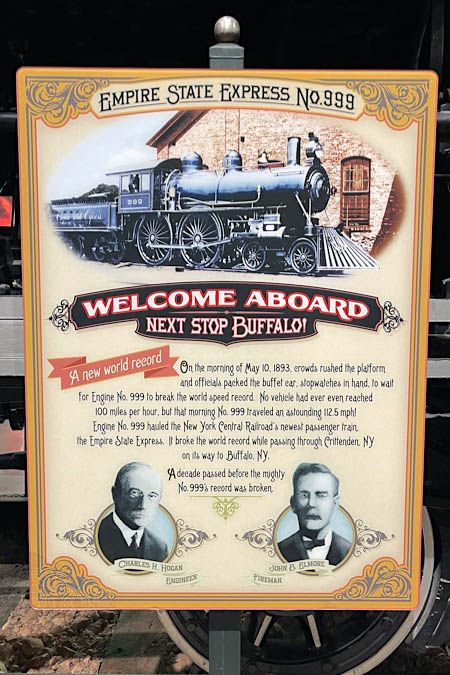
Mar 2023 / RWH

Mar 2023 / RWH
Rail Displays

 UNCOMMON or UNUSUAL equipment
UNCOMMON or UNUSUAL equipment
Chicago, Burlington & Quincy Pioneer Zephyr
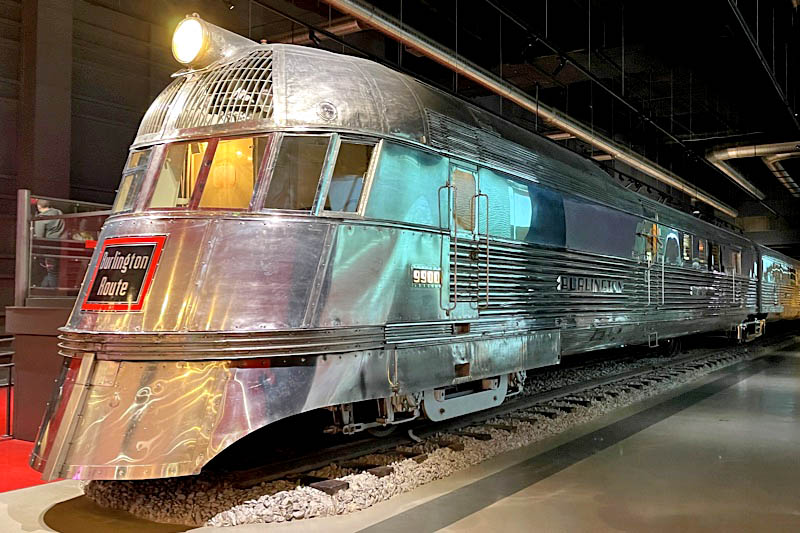
Chicago, Burlington & Quincy
Pioneer Zephyr
Chicago, Il / Mar 2023 / RWH


Chicago, Burlington & Quincy Pioneer Zephyr
entered service Nov 1934
retired from service, 1960
to Museum of Science & Industry
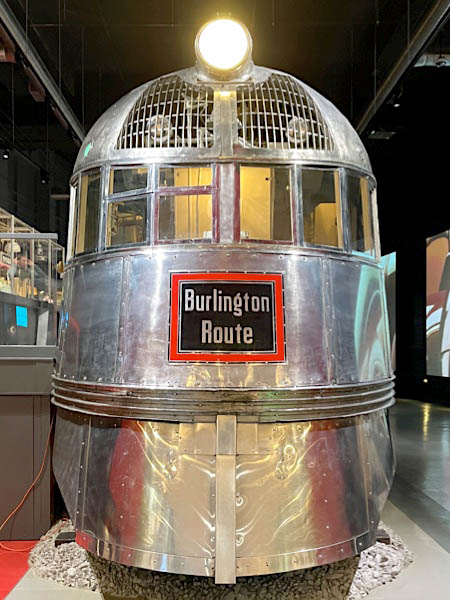
Mar 2023 / RWH
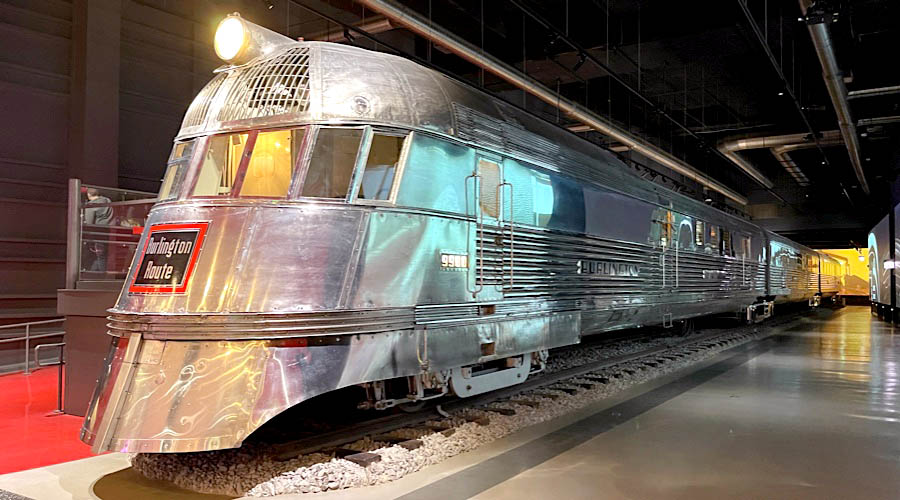
Chicago, Il / Mar 2023 / RWH

Mar 2023 / RWH
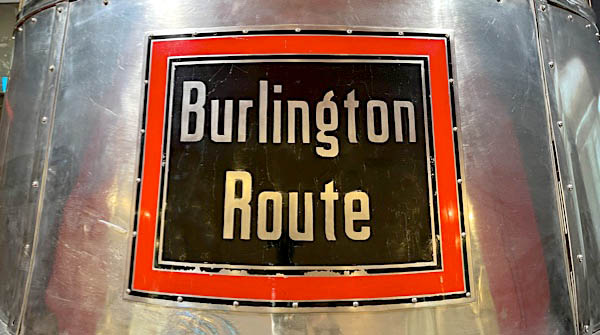
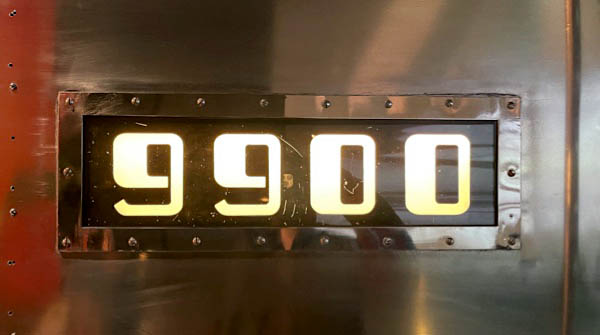

Mar 2023 / RWH
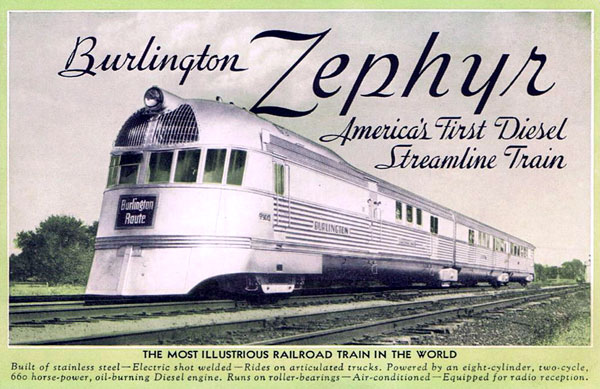 The Pioneer Zephyr is a diesel-powered trainset built by the Budd Company in 1934 for the Chicago, Burlington & Quincy Railroad (CB&Q), commonly known as the Burlington Route. The trainset was the second internal combustion-powered streamliner built for mainline service in the United States, the first such train powered by a diesel engine, and the first to enter revenue service. The trainset consists of one power/storage car, one baggage/RPO/buffet/coach car, and one coach/observation car. The cars are made of stainless steel, permanently articulated together with Jacobs bogies. The construction incorporated recent advances such as shotwelding (a specialized type of spot welding) to join the stainless steel, and unibody construction and articulation to reduce weight. It was the first of nine similarly built trainsets made for Burlington and its technologies were pivotal in the subsequent dieselization of passenger rail service. Its operating economy, speed, and public appeal demonstrated the potential for diesel-electric-powered trains to revitalize and restore profitability to passenger rail service that had suffered a catastrophic loss of business with the Great Depression. Originally named the Burlington Zephyr during its demonstration period, it became the Pioneer Zephyr as Burlington expanded its fleet of Zephyr trainsets.
The Pioneer Zephyr is a diesel-powered trainset built by the Budd Company in 1934 for the Chicago, Burlington & Quincy Railroad (CB&Q), commonly known as the Burlington Route. The trainset was the second internal combustion-powered streamliner built for mainline service in the United States, the first such train powered by a diesel engine, and the first to enter revenue service. The trainset consists of one power/storage car, one baggage/RPO/buffet/coach car, and one coach/observation car. The cars are made of stainless steel, permanently articulated together with Jacobs bogies. The construction incorporated recent advances such as shotwelding (a specialized type of spot welding) to join the stainless steel, and unibody construction and articulation to reduce weight. It was the first of nine similarly built trainsets made for Burlington and its technologies were pivotal in the subsequent dieselization of passenger rail service. Its operating economy, speed, and public appeal demonstrated the potential for diesel-electric-powered trains to revitalize and restore profitability to passenger rail service that had suffered a catastrophic loss of business with the Great Depression. Originally named the Burlington Zephyr during its demonstration period, it became the Pioneer Zephyr as Burlington expanded its fleet of Zephyr trainsets.
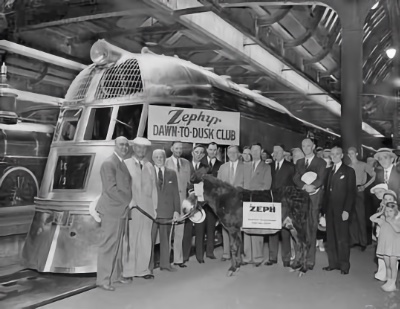 On May 26, 1934, it set a speed record for travel between Denver and Chicago when it made a 1,015.4-mile (1,633 km) non-stop "Dawn-to-Dusk" dash in 13 hours 5 minutes at an average speed of almost 78 mph (124 km/h). For one section of the run it reached a speed of 112.5 mph (181 km/h). The historic dash inspired a 1934 film ("The Silver Streak") and the train's nickname, "The Silver Streak".
On May 26, 1934, it set a speed record for travel between Denver and Chicago when it made a 1,015.4-mile (1,633 km) non-stop "Dawn-to-Dusk" dash in 13 hours 5 minutes at an average speed of almost 78 mph (124 km/h). For one section of the run it reached a speed of 112.5 mph (181 km/h). The historic dash inspired a 1934 film ("The Silver Streak") and the train's nickname, "The Silver Streak".
The train entered regular revenue service on November 11, 1934, between Kansas City, Missouri, Omaha, Nebraska, and Lincoln, Nebraska. It operated this and other routes until its retirement in 1960, when it was donated to Chicago's Museum of Science & Industry, where it remains on public display. The train is generally regarded as the first successful streamliner on American railroads.
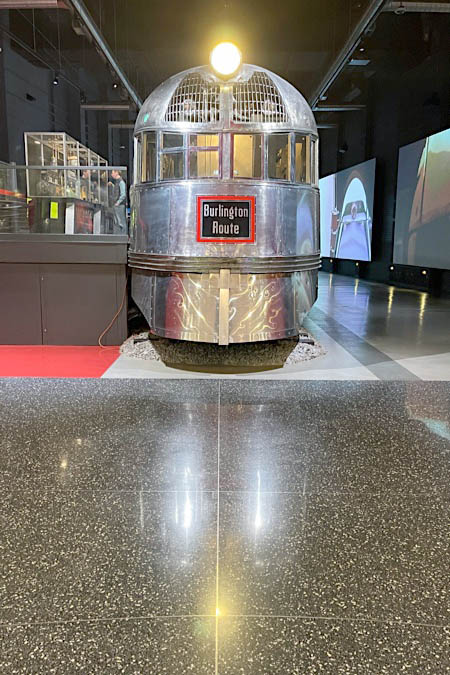
Mar 2023 / RWH

Mar 2023 / RWH

collection
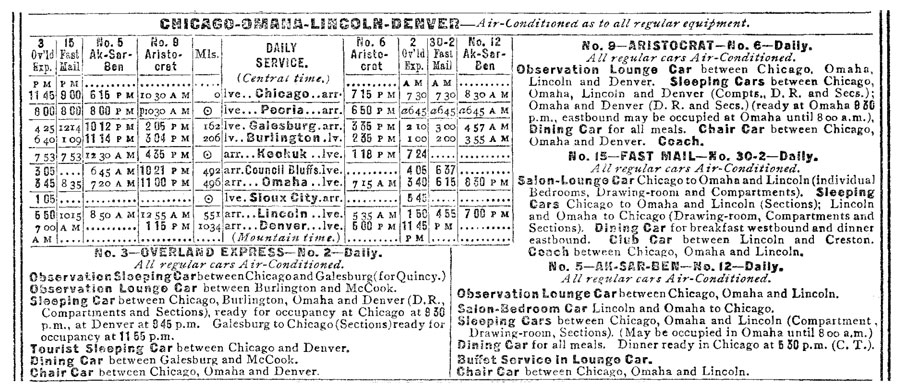
1936 Official Guide ad / collection

Chicago, Il / Mar 2023 / RWH

 UNCOMMON or UNUSUAL locomotive
UNCOMMON or UNUSUAL locomotive
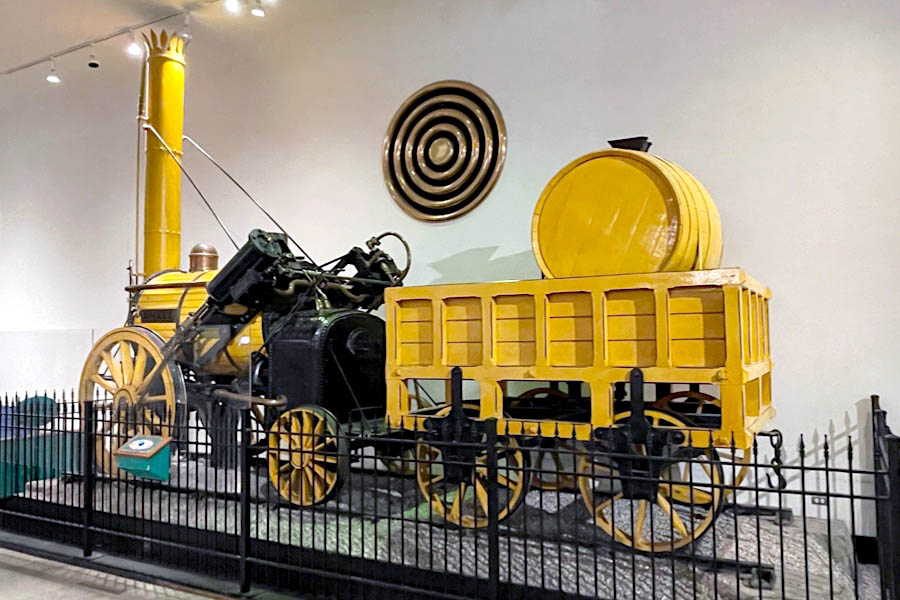
Robert Stephenson's Rocket replica
Chicago, Il / Mar 2023 / RWH

Wikipedia

Chicago, Il / Mar 2023 / RWH
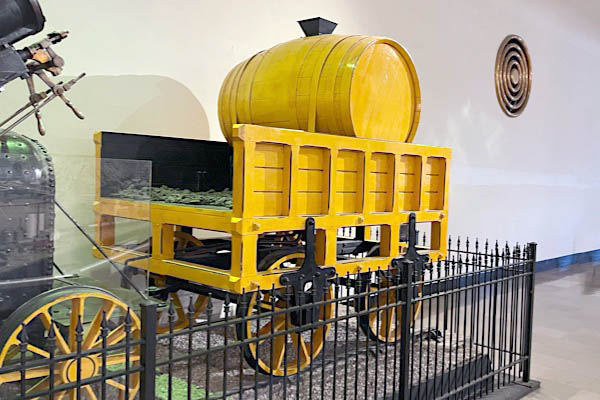
Mar 2023 / RWH
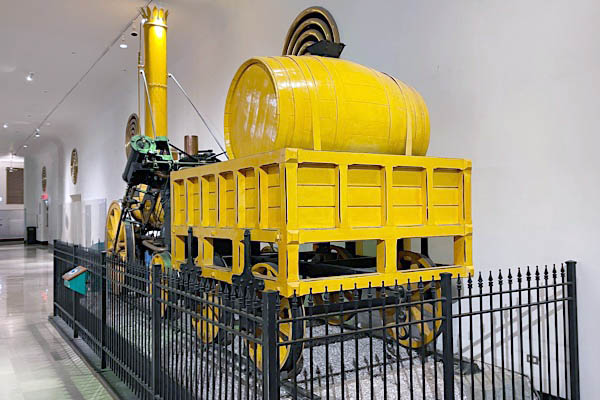
Mar 2023 / RWH
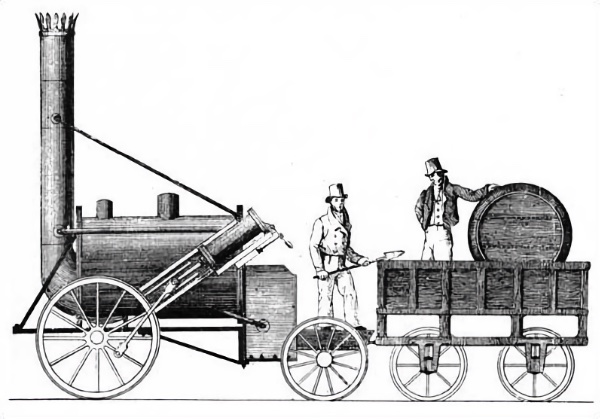 Stephenson's Rocket is an early steam locomotive of 0-2-2 wheel arrangement. It was built for and won the Rainhill Trials of the Liverpool and Manchester Railway (L&MR), held in October 1829 to show that improved locomotives would be more efficient than stationary steam engines.
Rocket was designed and built by Robert Stephenson in 1829, and built at the Forth Street Works of his company in Newcastle upon Tyne.
Stephenson's Rocket is an early steam locomotive of 0-2-2 wheel arrangement. It was built for and won the Rainhill Trials of the Liverpool and Manchester Railway (L&MR), held in October 1829 to show that improved locomotives would be more efficient than stationary steam engines.
Rocket was designed and built by Robert Stephenson in 1829, and built at the Forth Street Works of his company in Newcastle upon Tyne.
Though Rocket was by no means the first steam locomotive, it was the first to bring together several innovations to produce the most advanced locomotive of its day. It is the most famous example of an evolving design of locomotives by Stephenson that became the template for most steam engines in the following 150 years.
The [original] locomotive was preserved and displayed in the Science Museum in London until 2018, after which it was displayed at the National Railway Museum in York. There are, however, at least two replicas of Rocket in the United States, both built by Robert Stephenson and Hawthorns in 1929; one is at the Henry Ford Museum in the Metro Detroit suburb of Dearborn, Michigan, the other at the Museum of Science and Industry, Chicago.
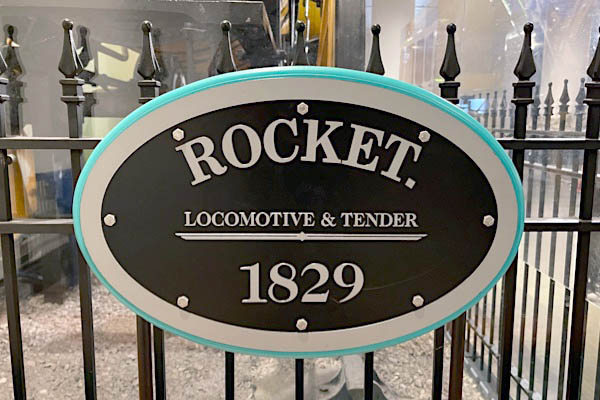


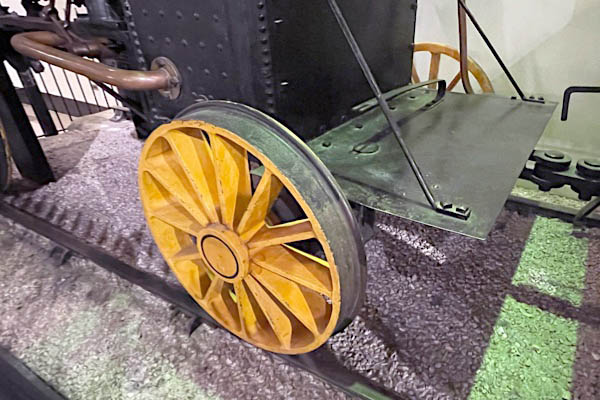
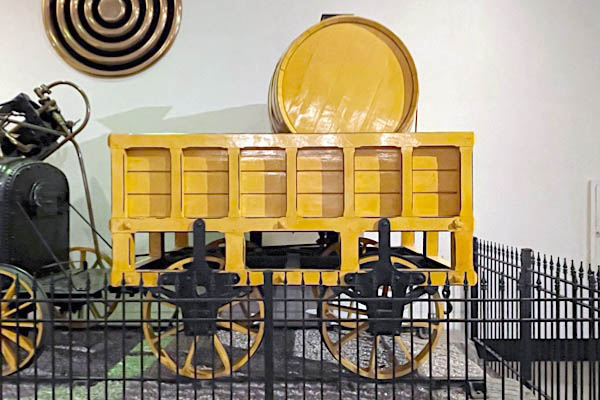
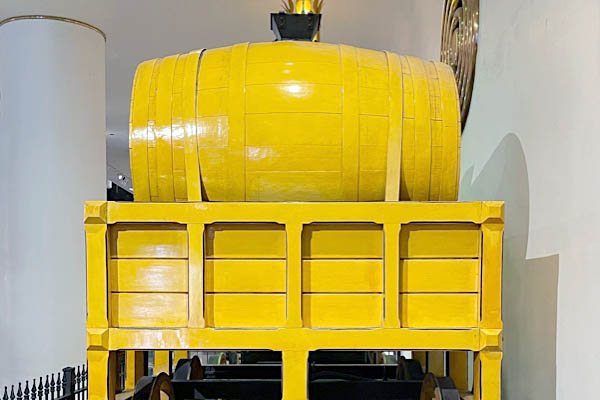
Mar 2023 / RWH
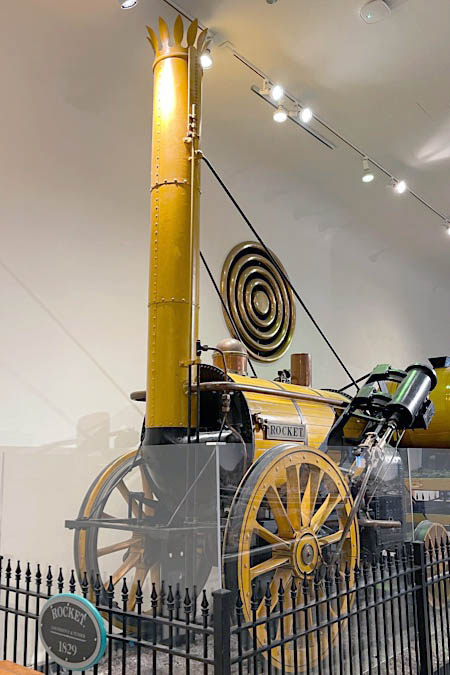
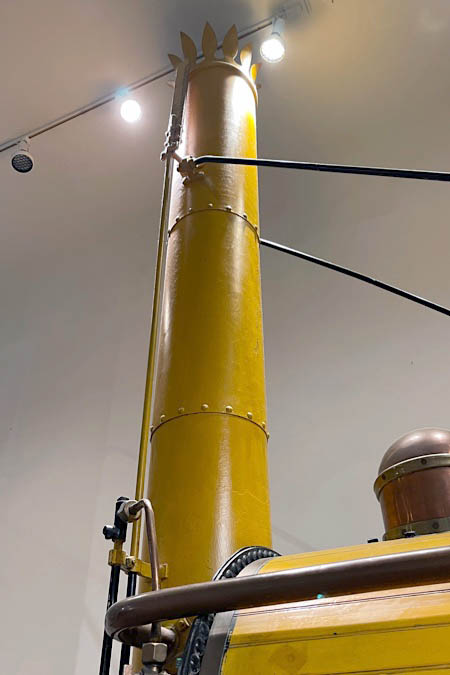
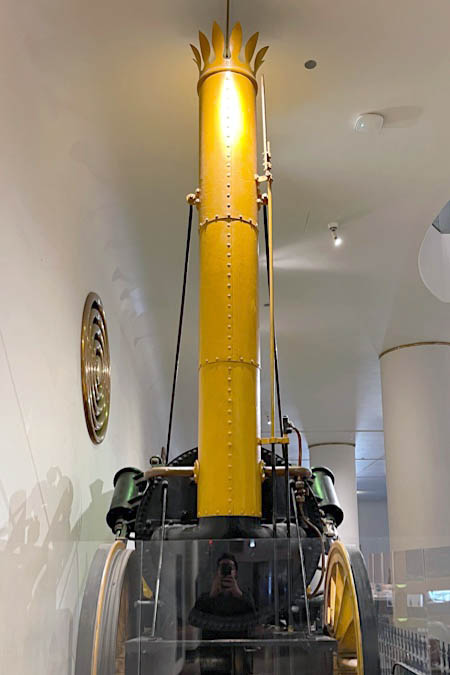
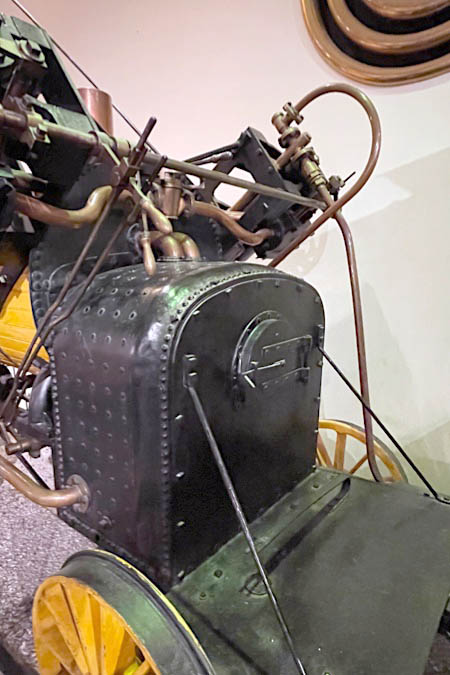
Mar 2023 / RWH
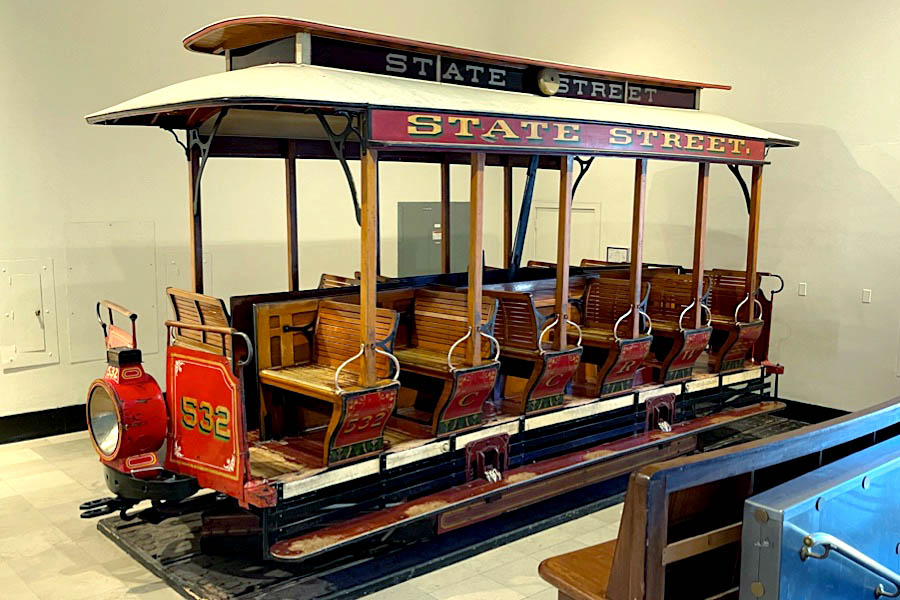
Chicago City Railway #532
cable car / Chicago, Il / Mar 2023 / RWH
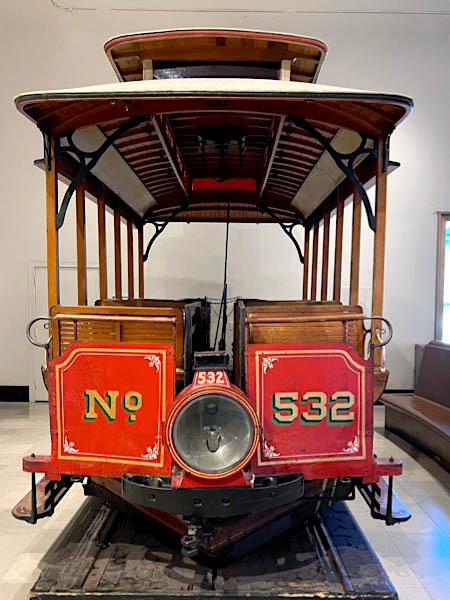
Mar 2023 / RWH
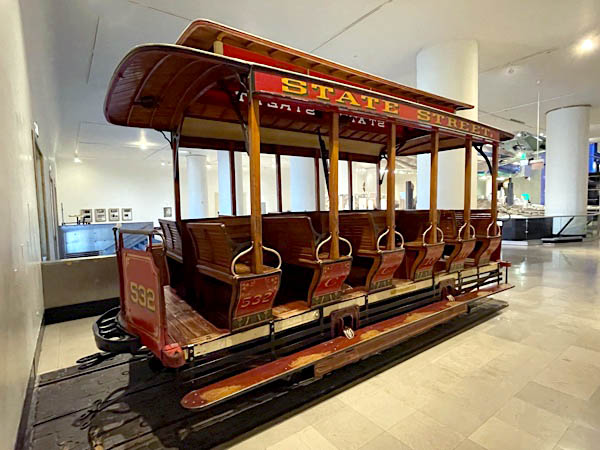
Chicago, Il / Mar 2023 / RWH
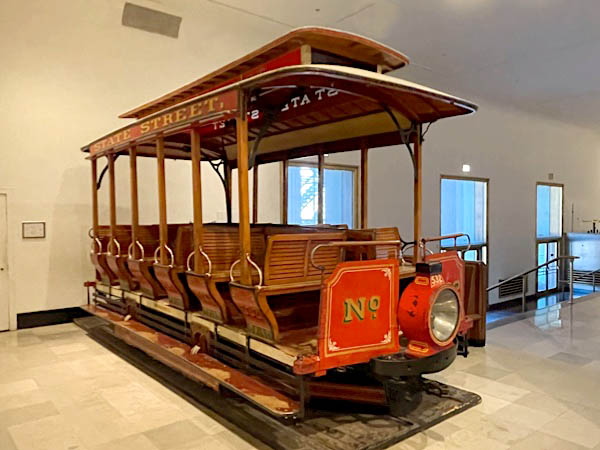
Chicago, Il / Mar 2023 / RWH

Mar 2023 / RWH
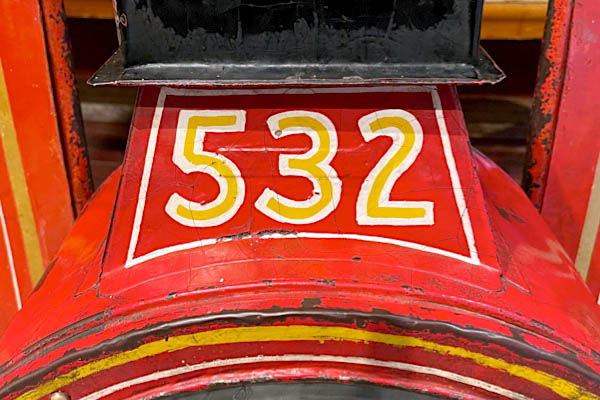
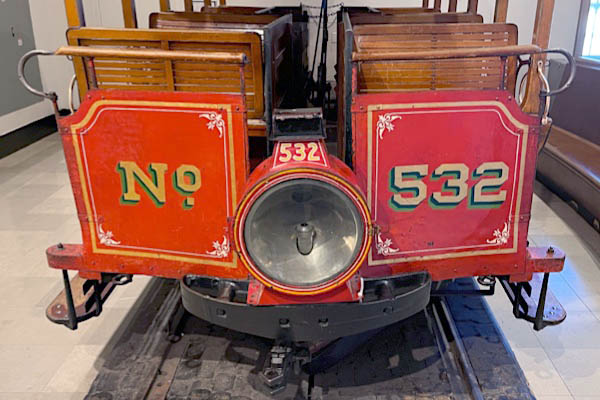
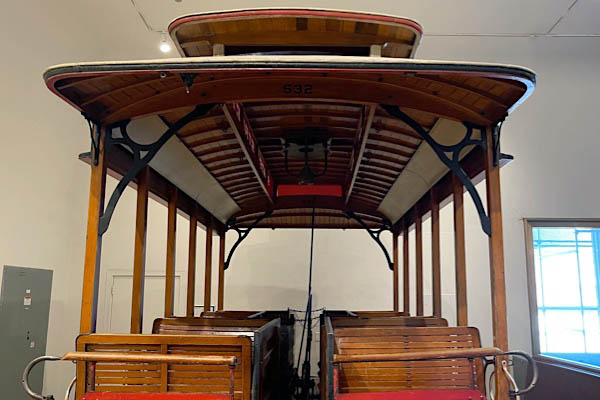
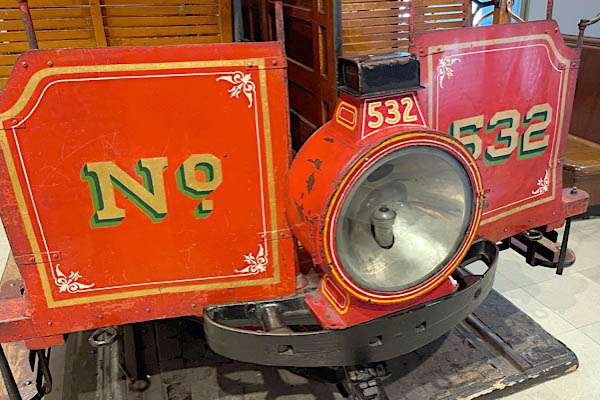
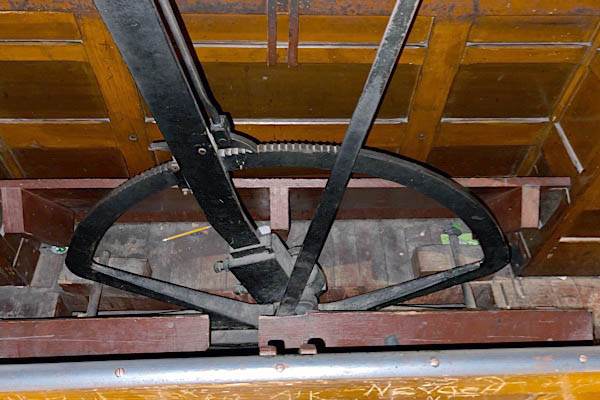

Mar 2023 / RWH
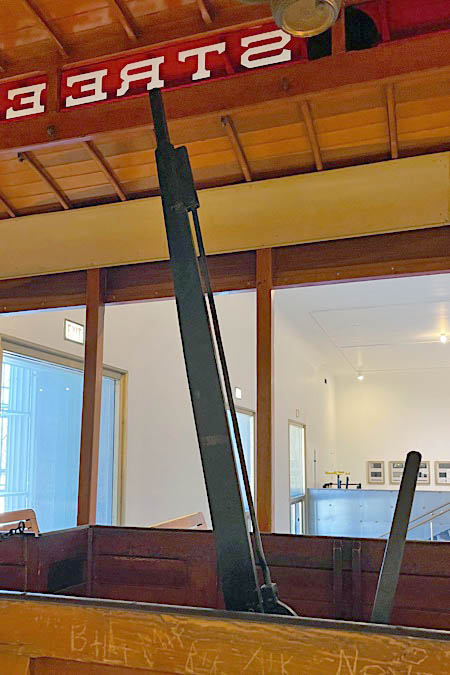
Mar 2023 / RWH
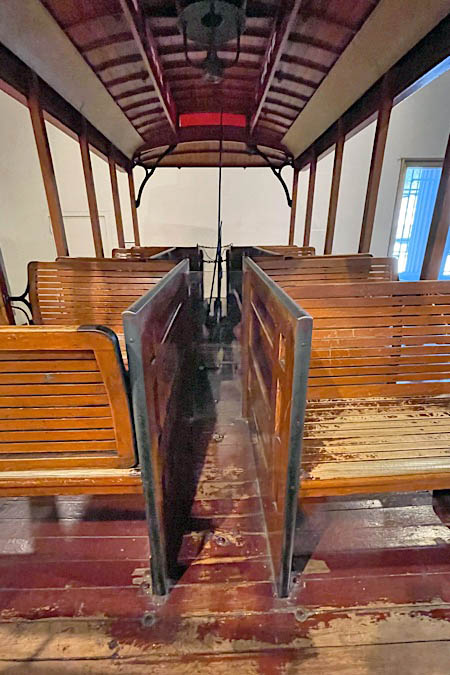
Mar 2023 / RWH
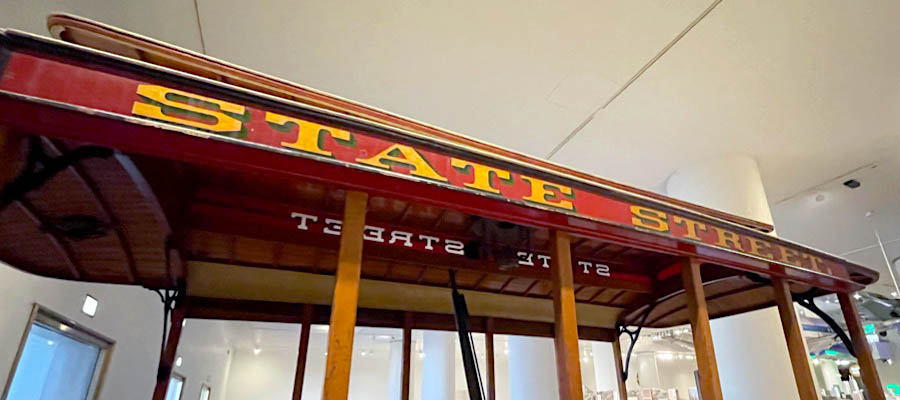
Mar 2023 / RWH
 The Great Train Story
The Great Train Story

Mar 2023 / RWH

Generations of guests have enjoyed model train experiences at MSI. Now, The Great Train Story provides the most enthralling one yet. A centerpiece of the Transportation Gallery, this interactive model railroad features more than 20 trains winding through a continental journey replicated in astonishing detail and scope. From the heights of Rocky Mountain ranges and Chicago skyscrapers, down to the tiniest crossing lights and floating seabirds, this massive scale model can be seen many times and still reveals something new on every visit.
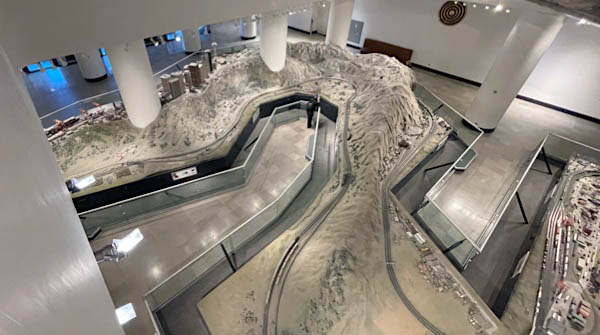
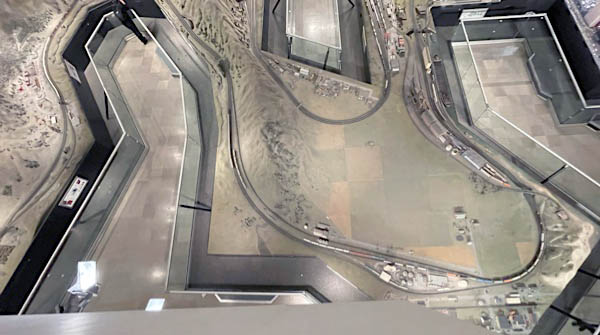
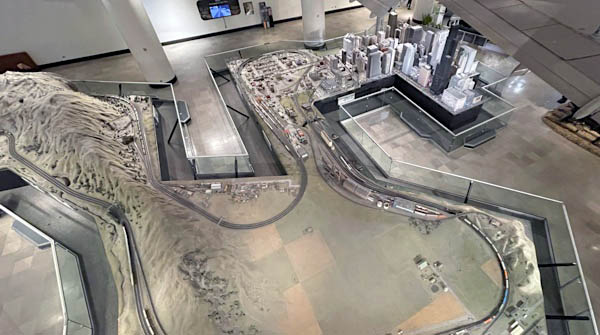
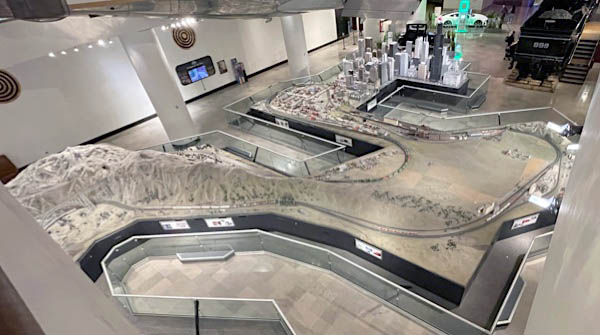
Mar 2023 / RWH
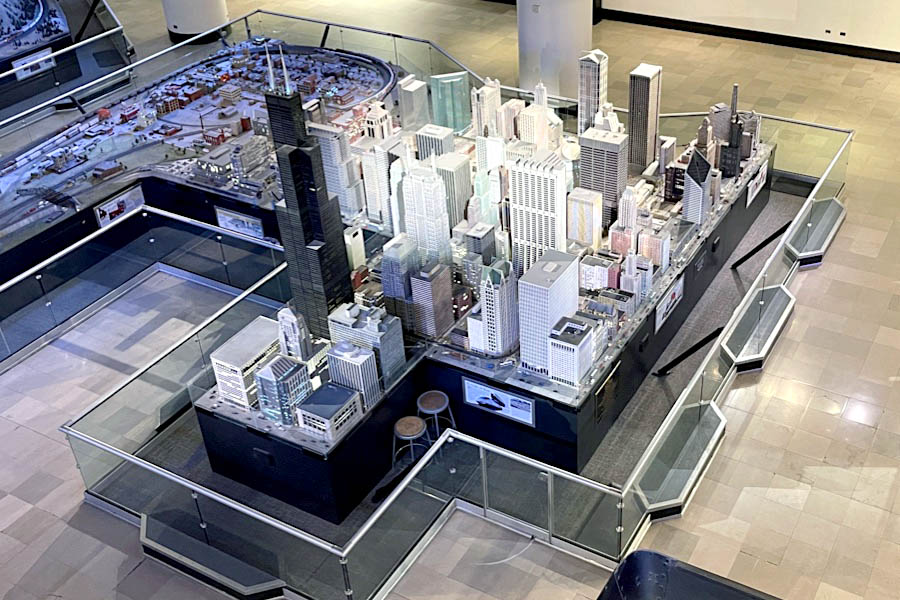
Mar 2023 / RWH
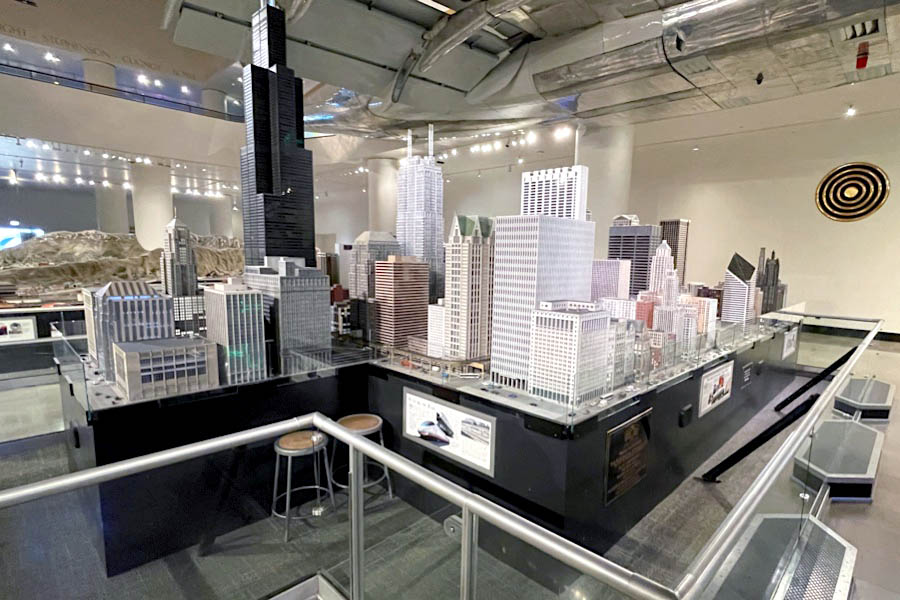
Mar 2023 / RWH
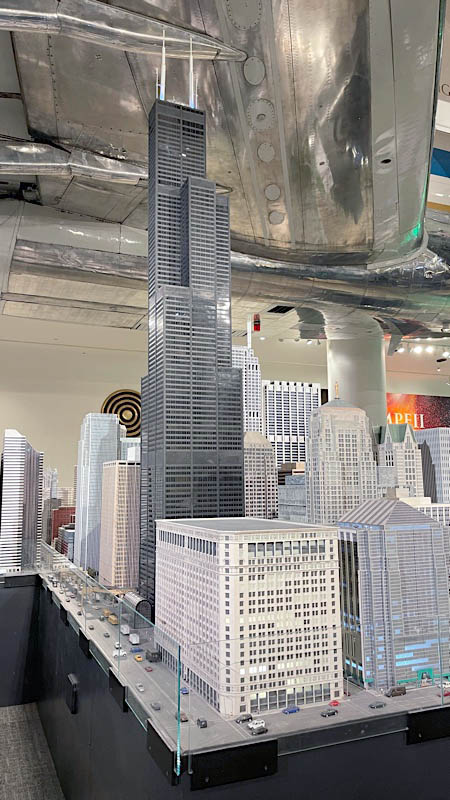
Mar 2023 / RWH
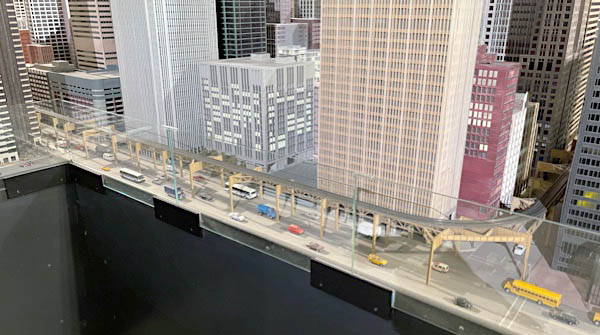
Mar 2023 / RWH
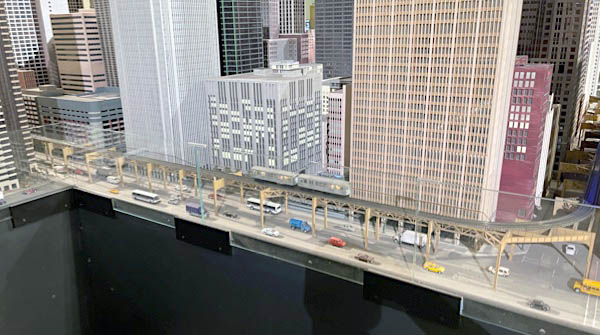
Mar 2023 / RWH
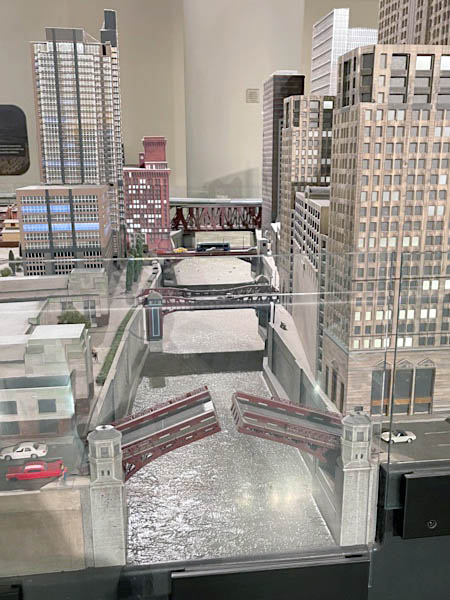
Mar 2023 / RWH
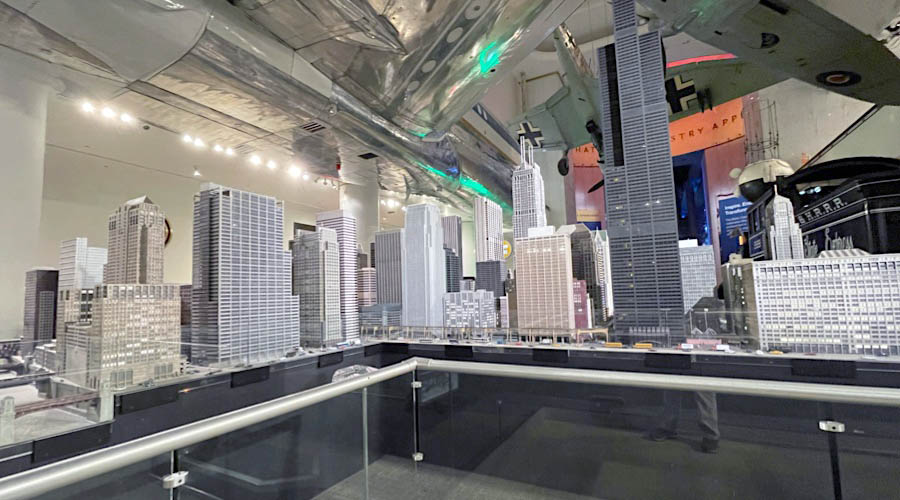
Mar 2023 / RWH
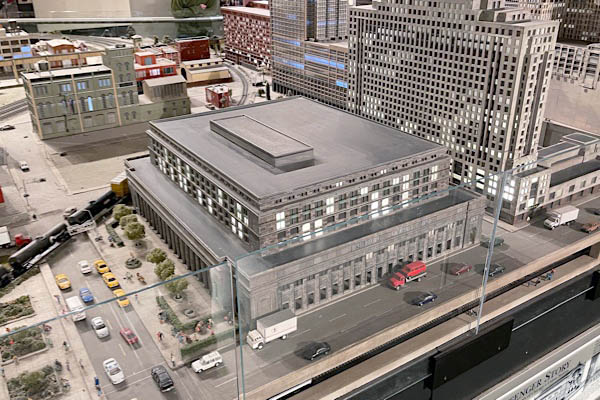
Mar 2023 / RWH
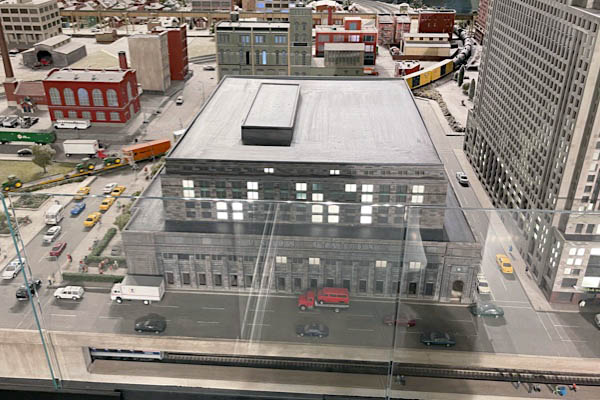
Mar 2023 / RWH
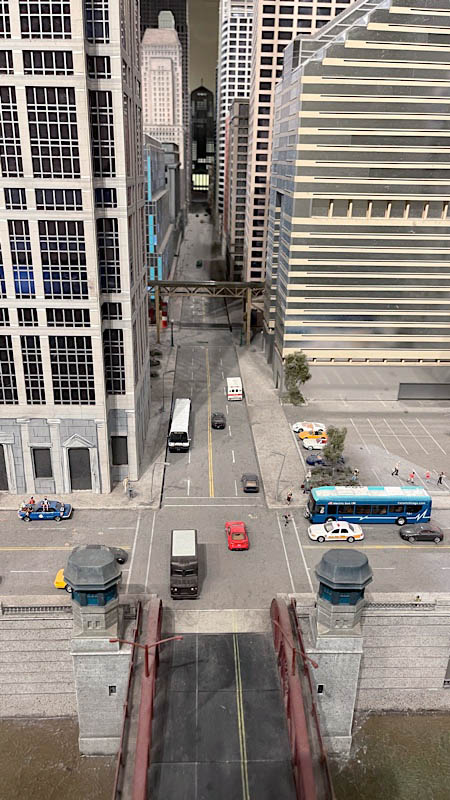
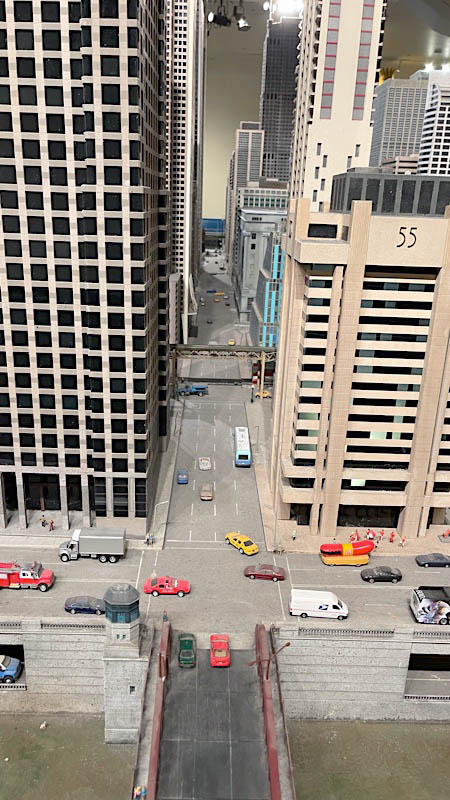
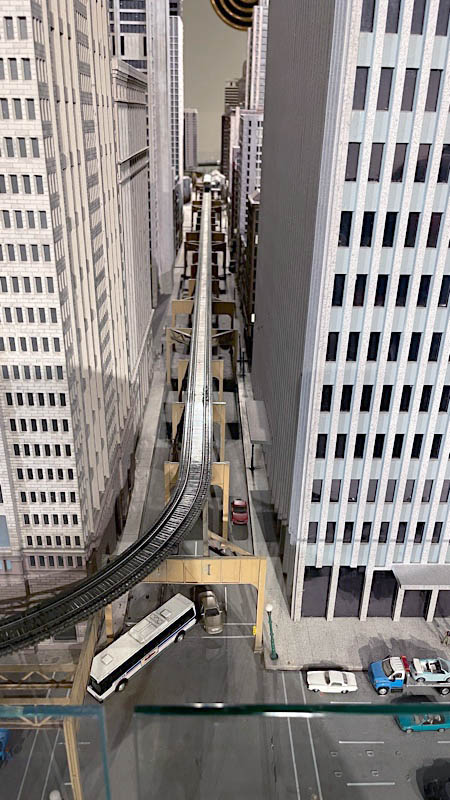
Mar 2023 / RWH
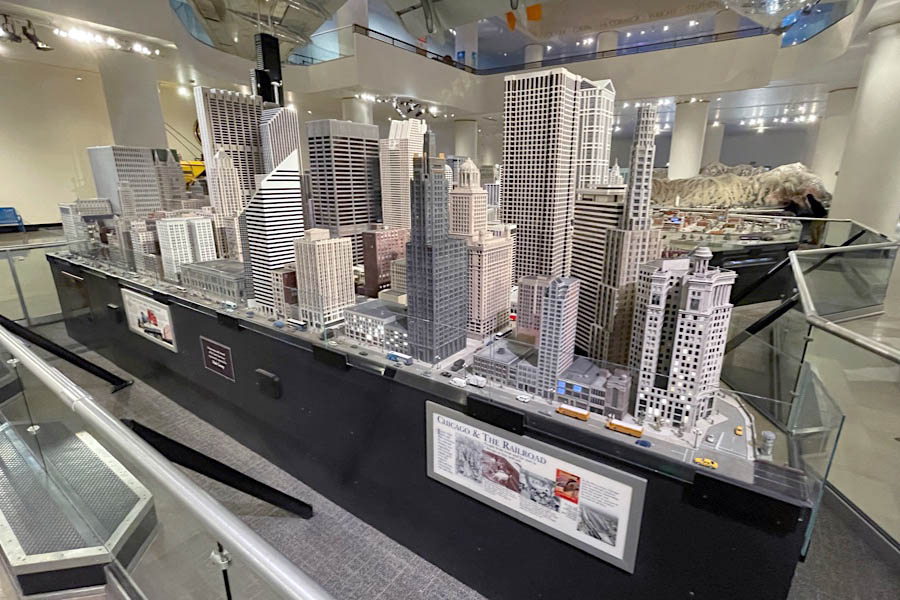
Mar 2023 / RWH
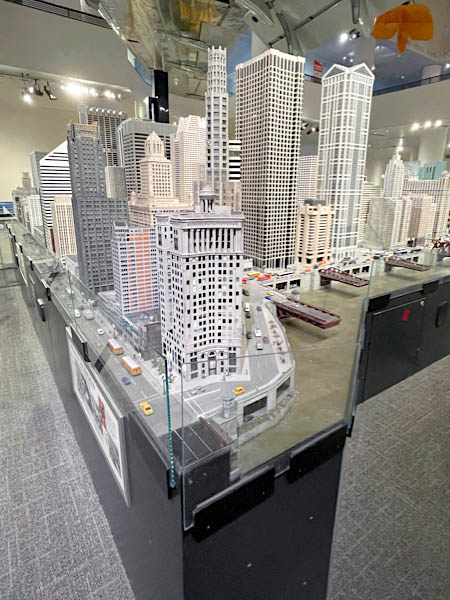
Mar 2023 / RWH

Mar 2023 / RWH
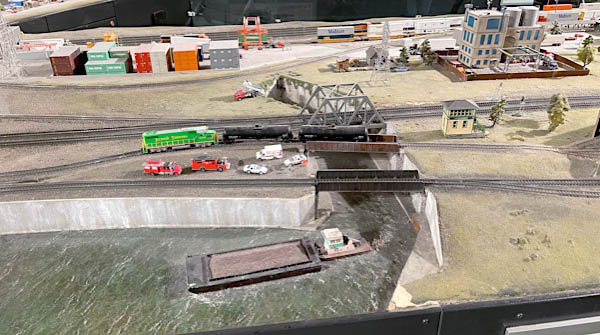

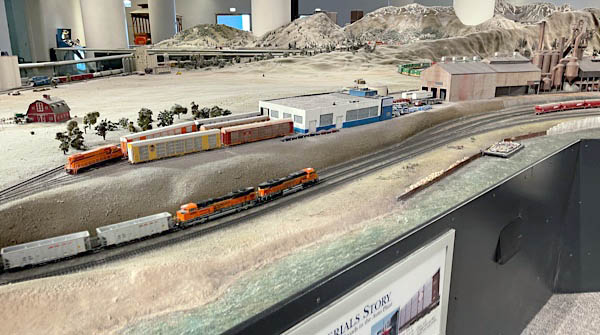
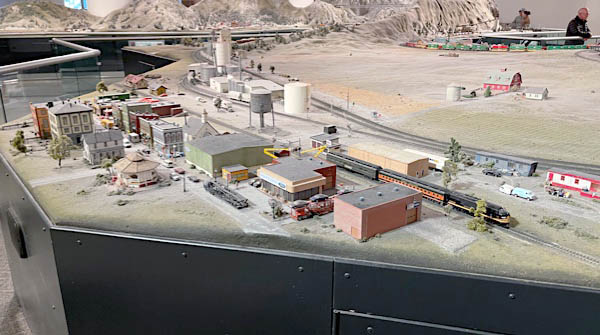

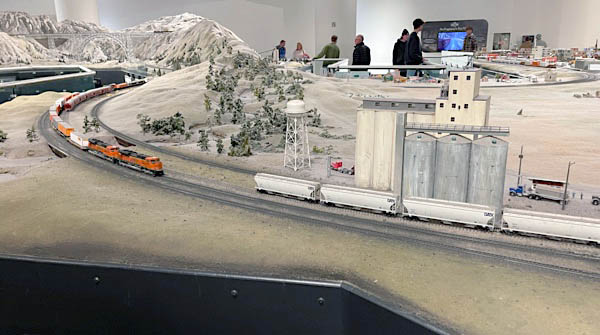
Mar 2023 / RWH
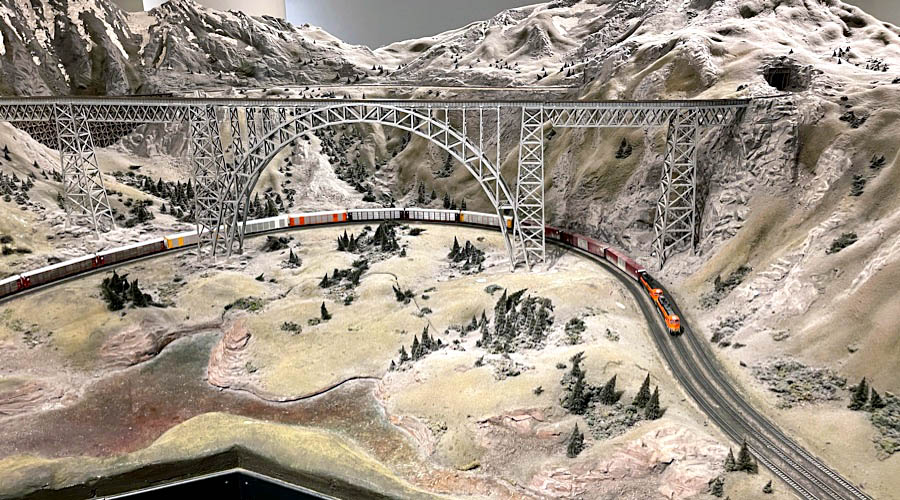
Mar 2023 / RWH
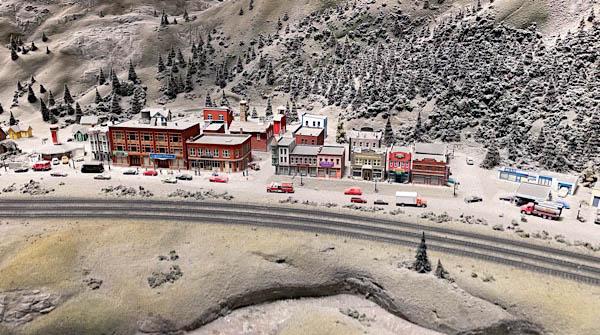

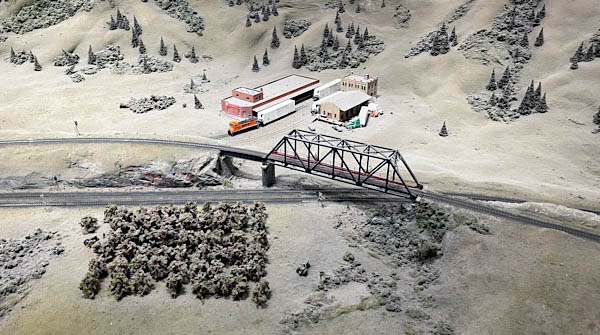
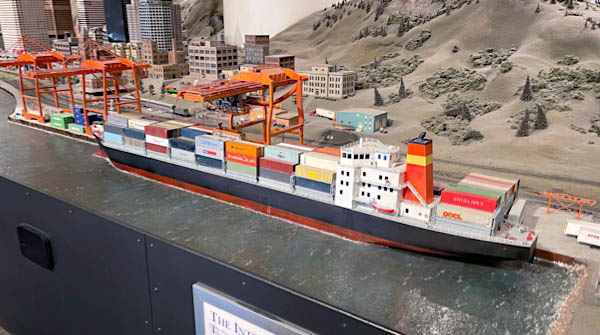
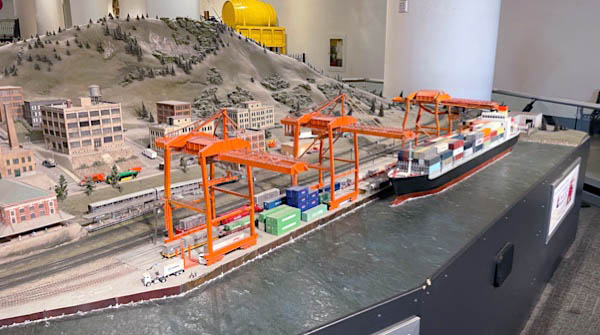
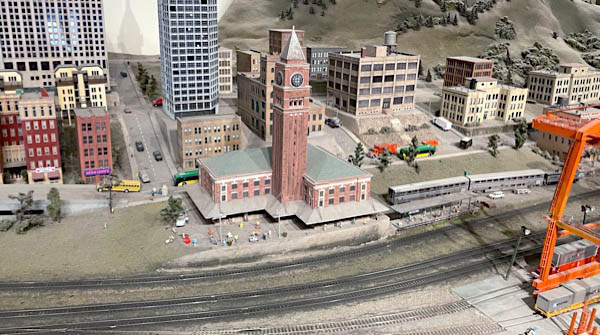
Mar 2023 / RWH
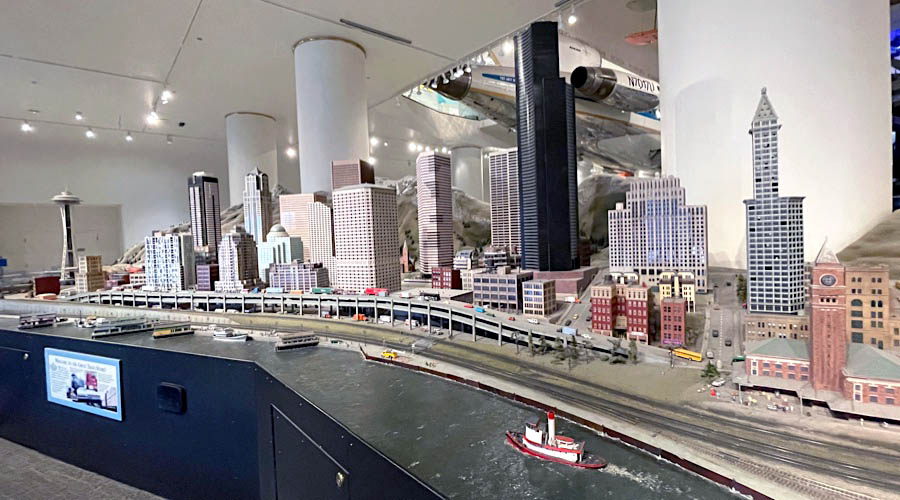
Mar 2023 / RWH
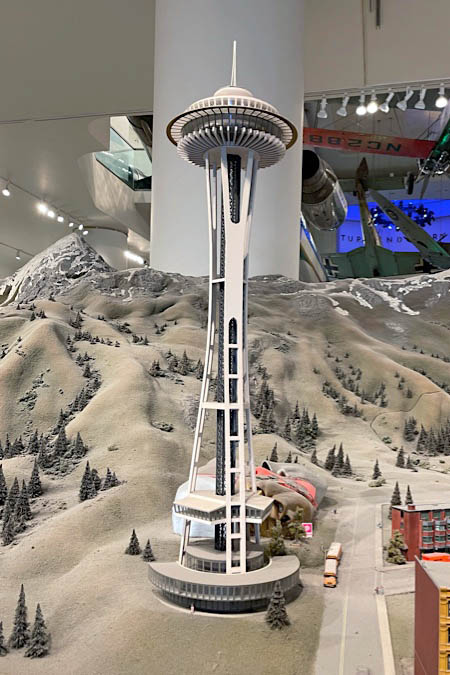
Mar 2023 / RWH

Mar 2023 / RWH
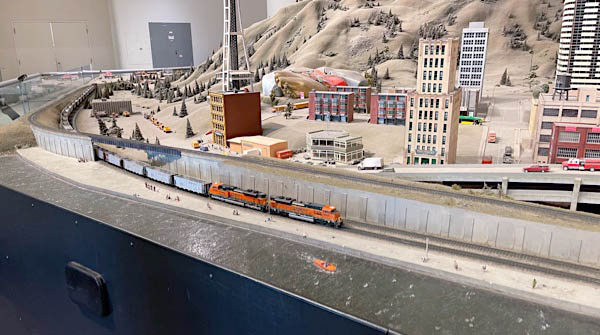

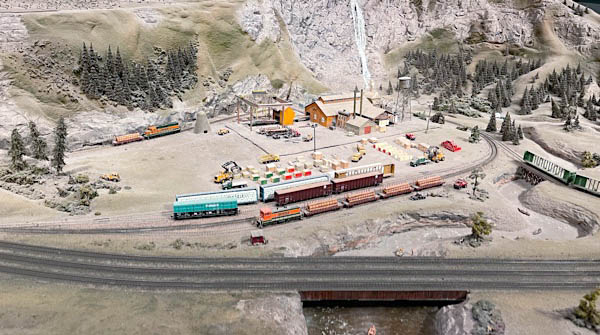

Mar 2023 / RWH
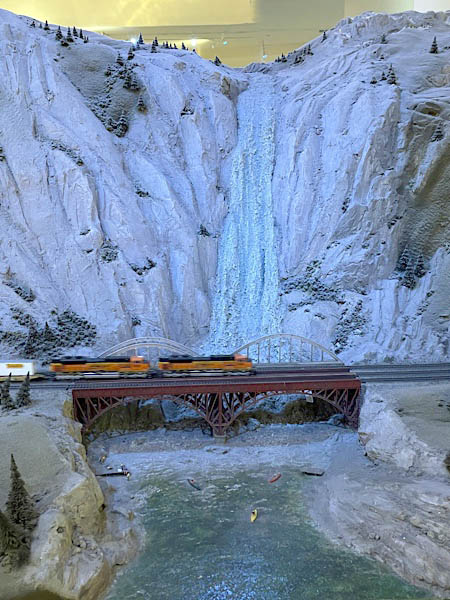
Mar 2023 / RWH
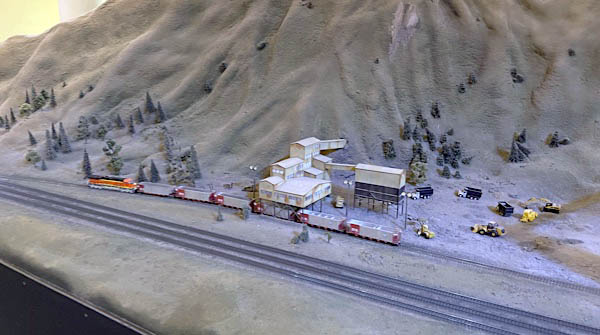
Mar 2023 / RWH
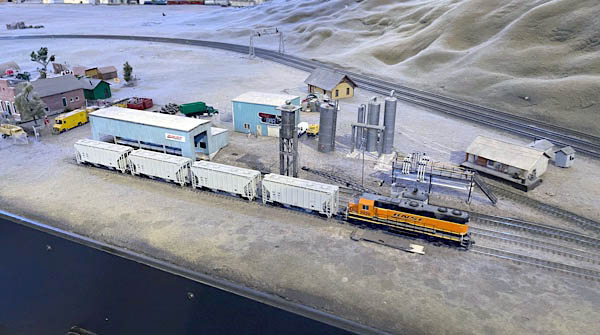
Mar 2023 / RWH
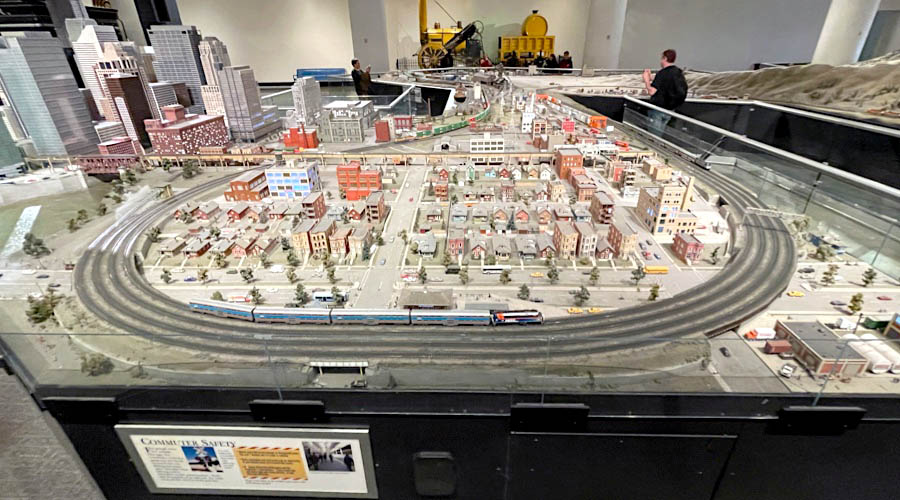
Mar 2023 / RWH
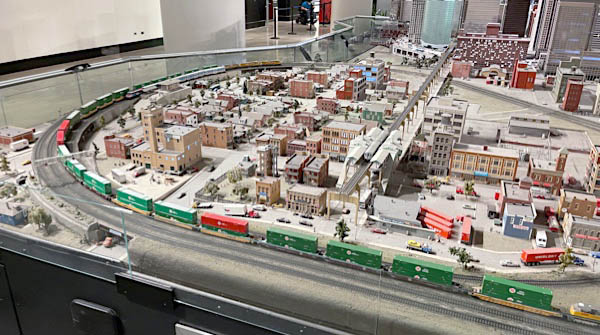

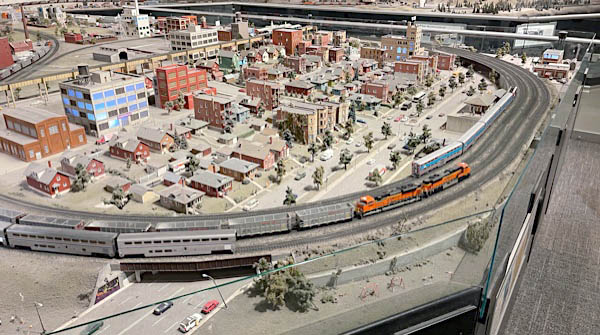
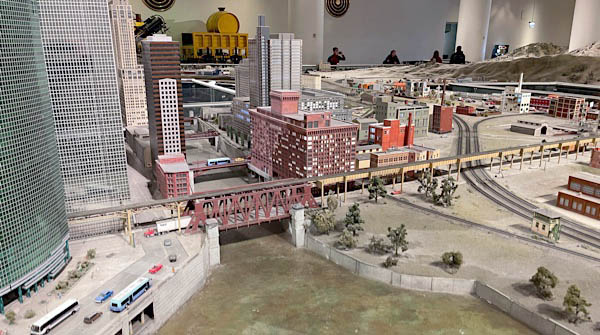
Mar 2023 / RWH
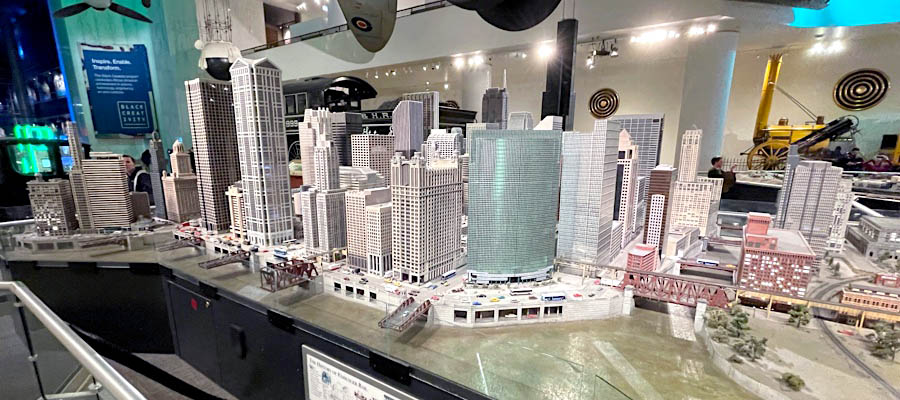
Mar 2023 / RWH
Mar 2023 / RWH
Other Transportation
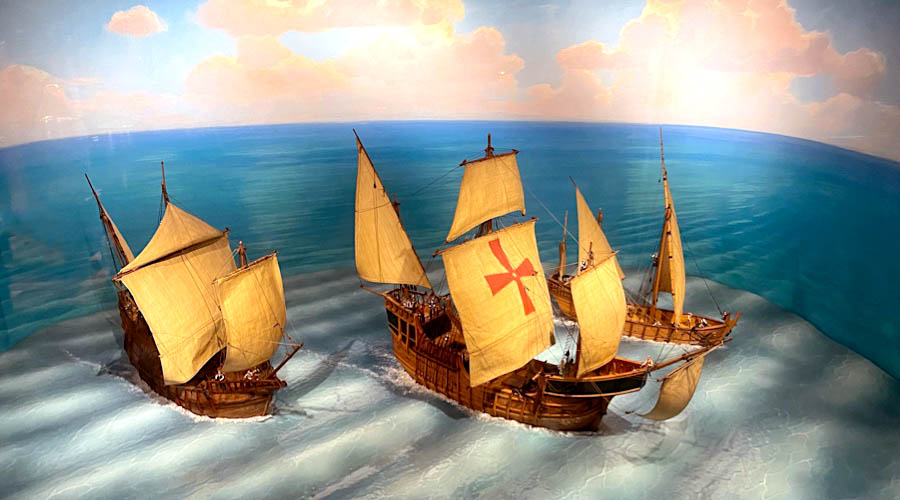
Mar 2023 / RWH
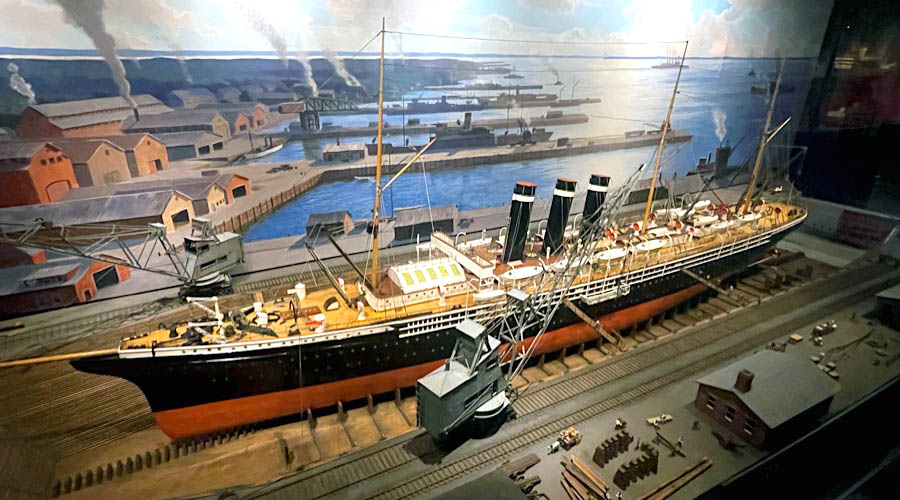
Mar 2023 / RWH
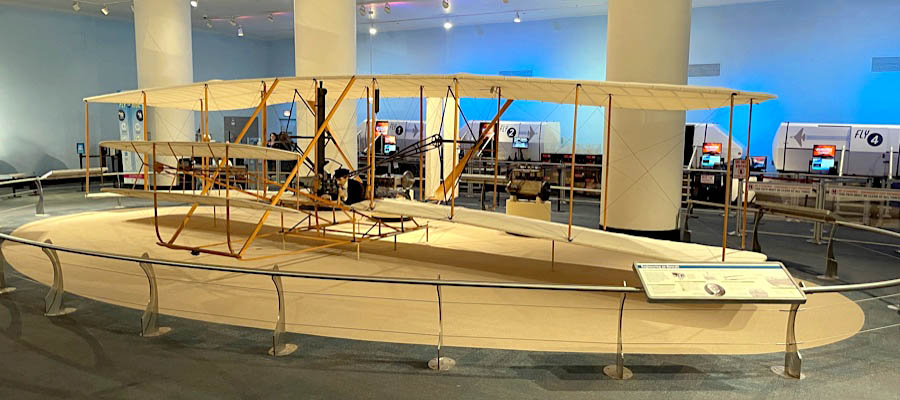
Mar 2023 / RWH
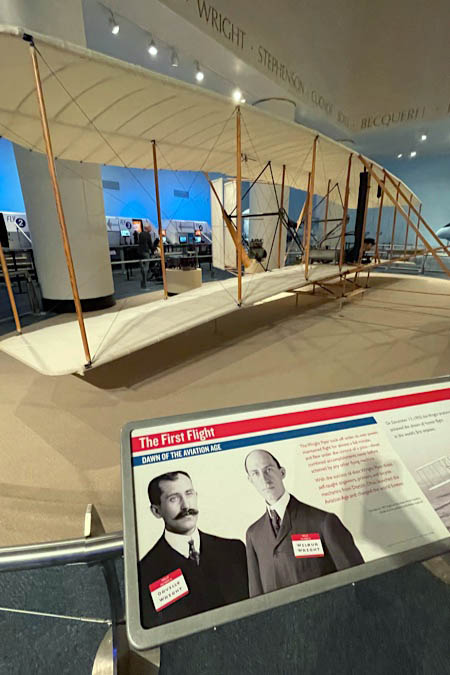
Mar 2023 / RWH
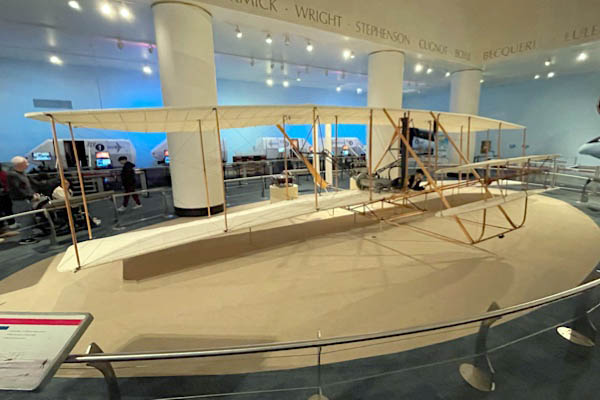
Mar 2023 / RWH
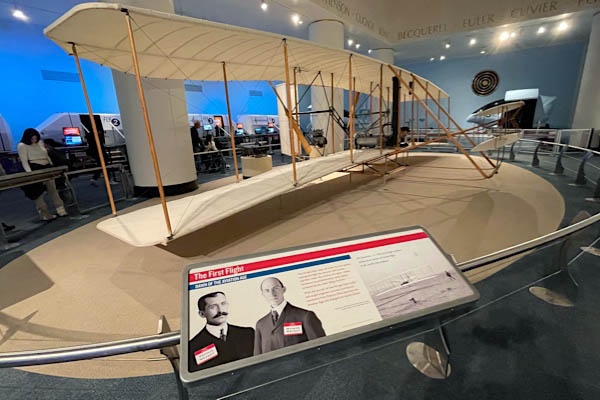
Mar 2023 / RWH
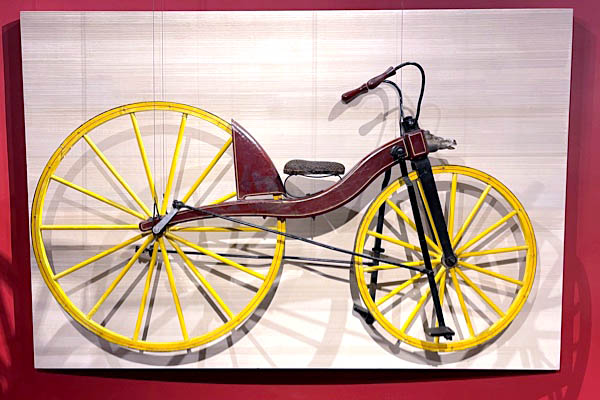
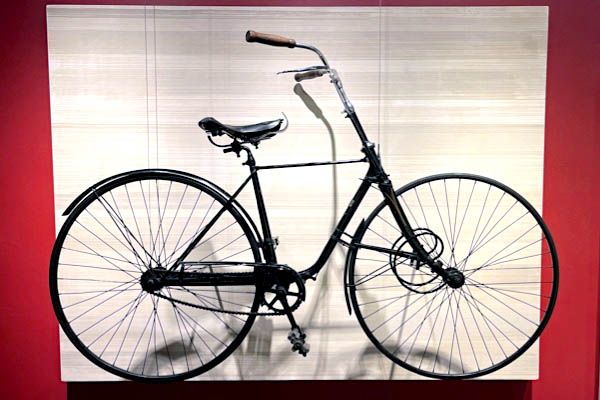
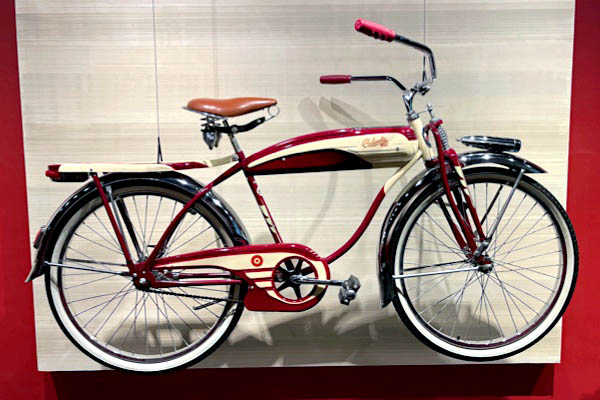

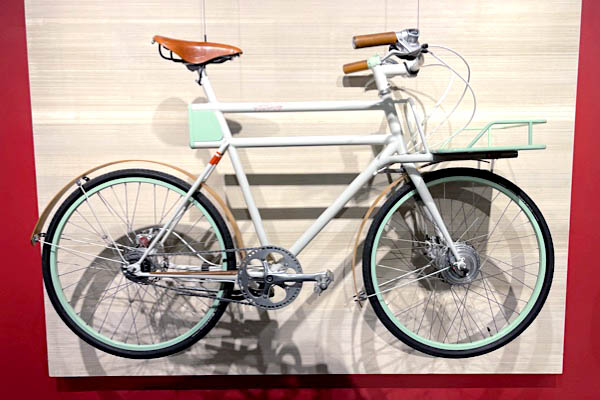

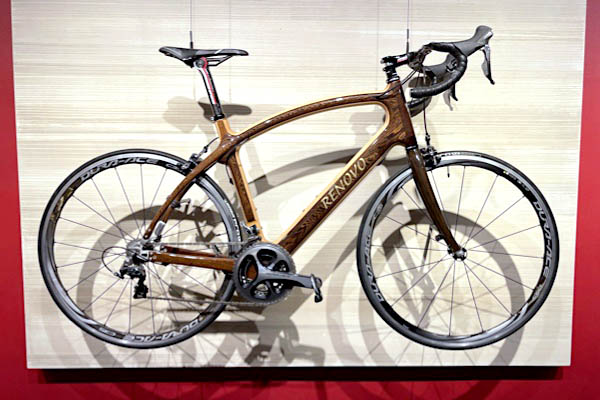
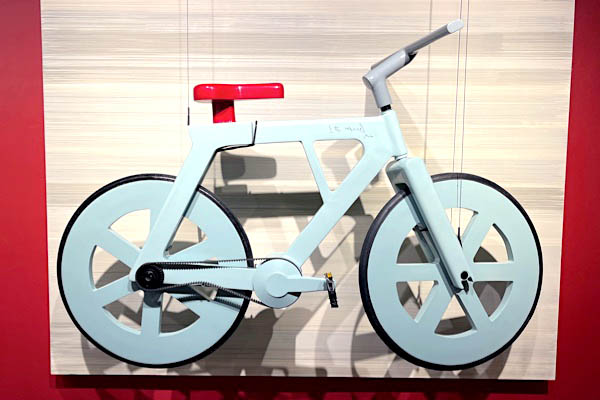
Mar 2023 / RWH
 Beautiful Boeing
Beautiful Boeing
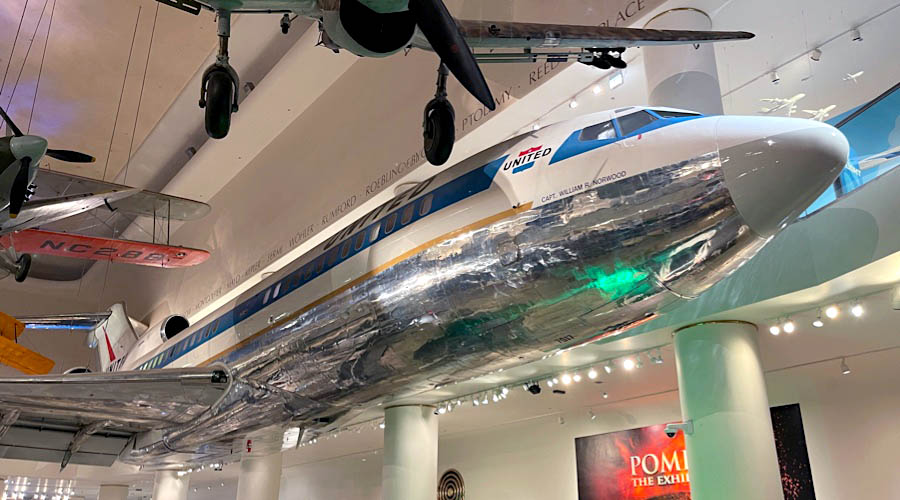
United #N7017U "Mainliner"
Boeing 727 / Chicago, Il / Mar 2023 / RWH
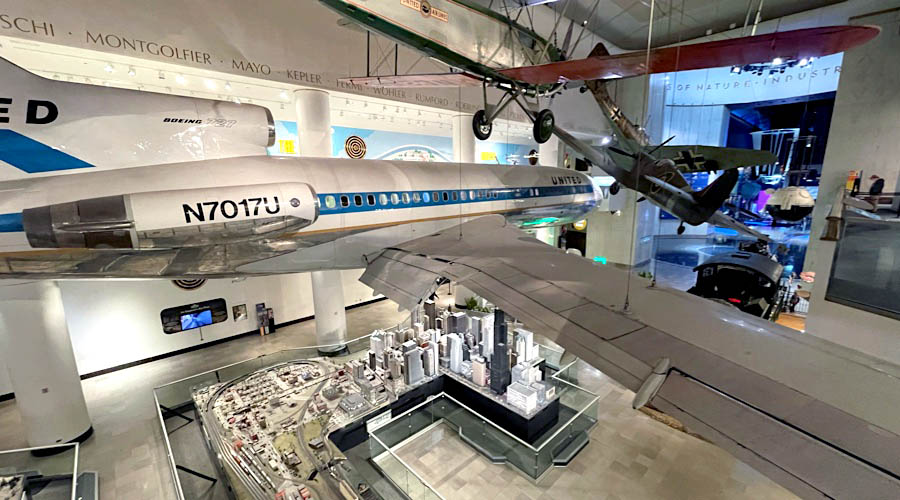
Mar 2023 / RWH

Mar 2023 / RWH

 The Boeing 727 returns to its 1960s glamour to take you on a tour of modern aviation. It’s been more than 25 years since the 727 landed at MSI. Turns out that was just the beginning. In a newly reimagined exhibit, Take Flight celebrates the historic United Airlines plane and explores how the airline industry connects people around the world.
The Boeing 727 returns to its 1960s glamour to take you on a tour of modern aviation. It’s been more than 25 years since the 727 landed at MSI. Turns out that was just the beginning. In a newly reimagined exhibit, Take Flight celebrates the historic United Airlines plane and explores how the airline industry connects people around the world.
See a section of the 727 as it looked on its first flights in 1964. We also peeled back the skin of the airplane to show mechanical, electronic and hydraulic systems. Learn about the science behind side effects passengers may experience at high altitudes, like turbulence and dehydration, and ways to overcome them. Talk to United Airlines pilots who volunteer at the exhibit, sharing stories about their career and answering questions about how planes fly.

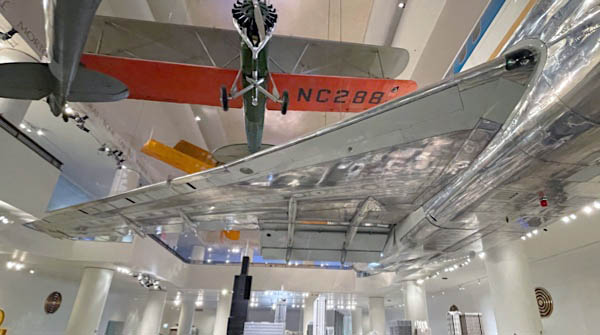



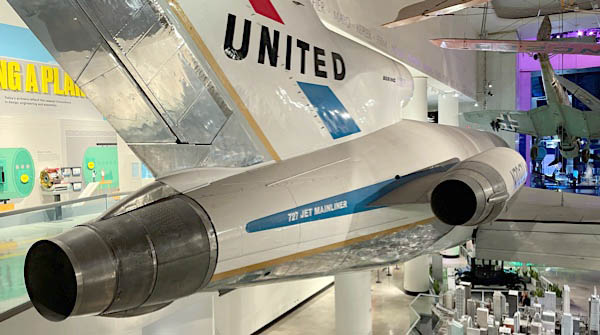

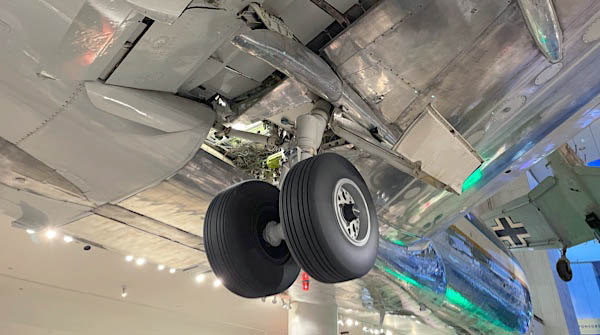

Mar 2023 / RWH
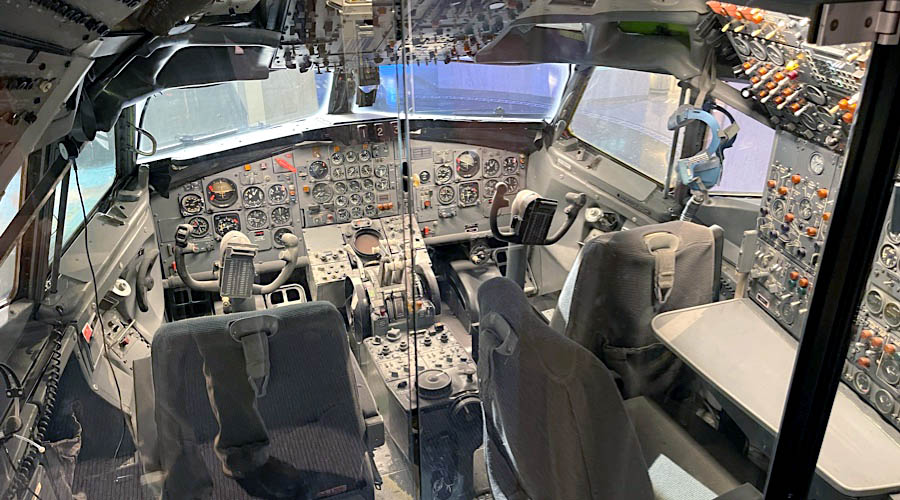
Mar 2023 / RWH
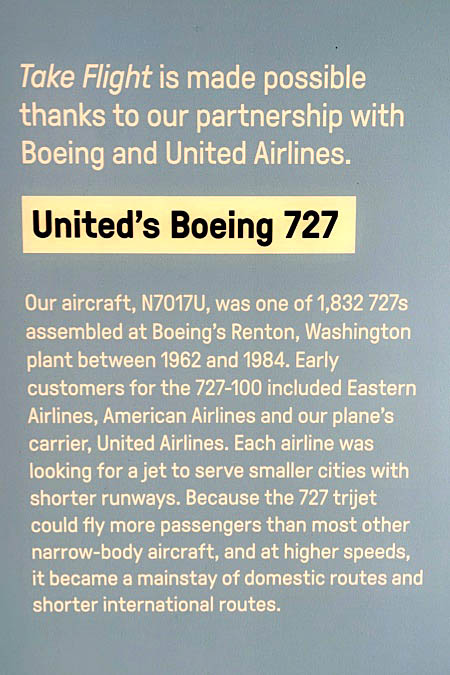
Mar 2023 / RWH

Mar 2023 / RWH
 Lagniappe
Lagniappe

Applying the Laws of Nature
Chicago, Il / Mar 2023 / RWH
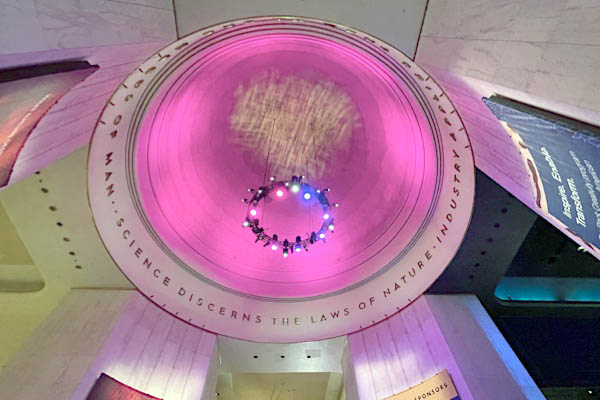
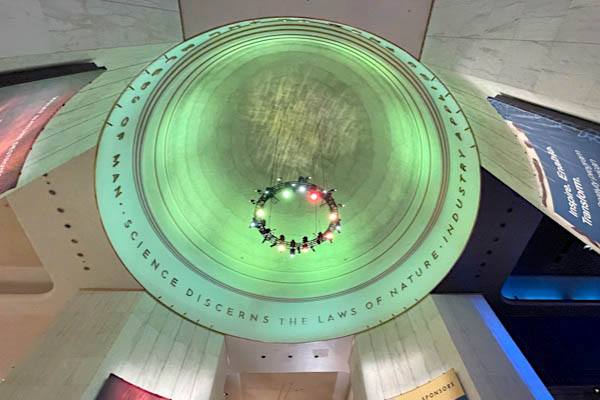
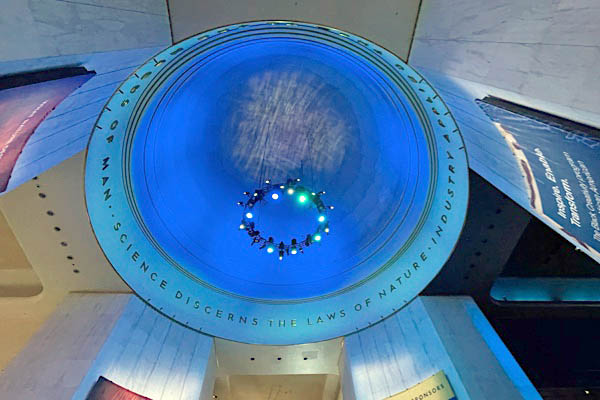
Seasons Change
Chicago, Il / Mar 2023 / RWH
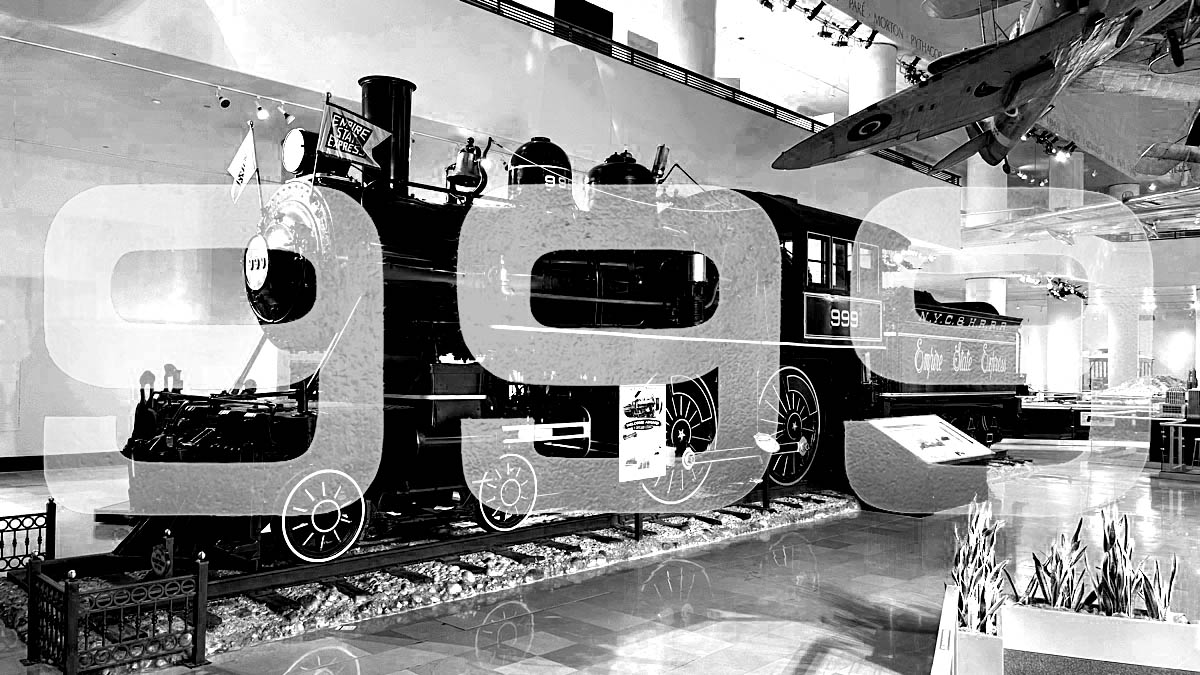
Triple Nines for the Win
Chicago, Il / Mar 2023 / image and artwork RWH
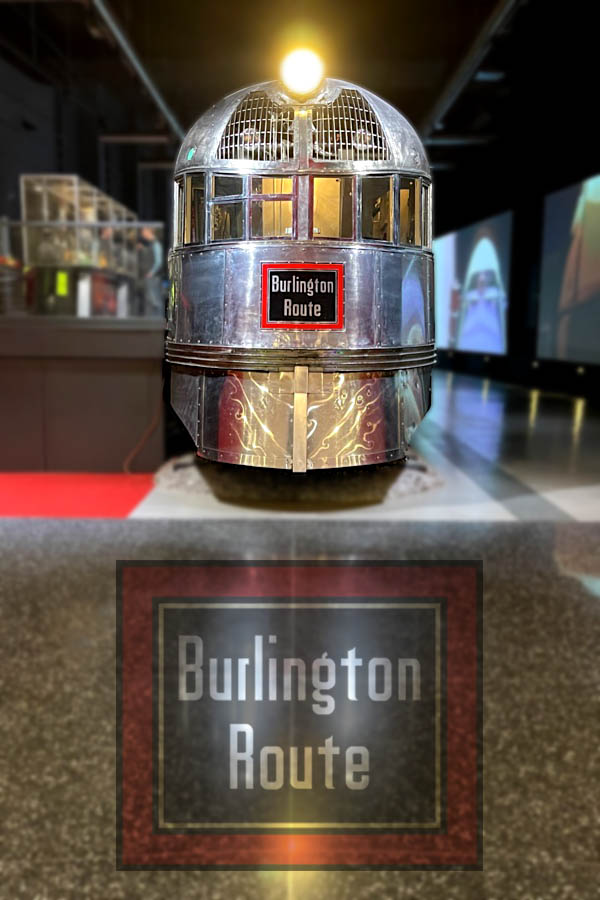
West Wind Blowing
Chicago, Il / Mar 2023 / RWH

Downtown Life
Chicago, Il / Mar 2023 / RWH
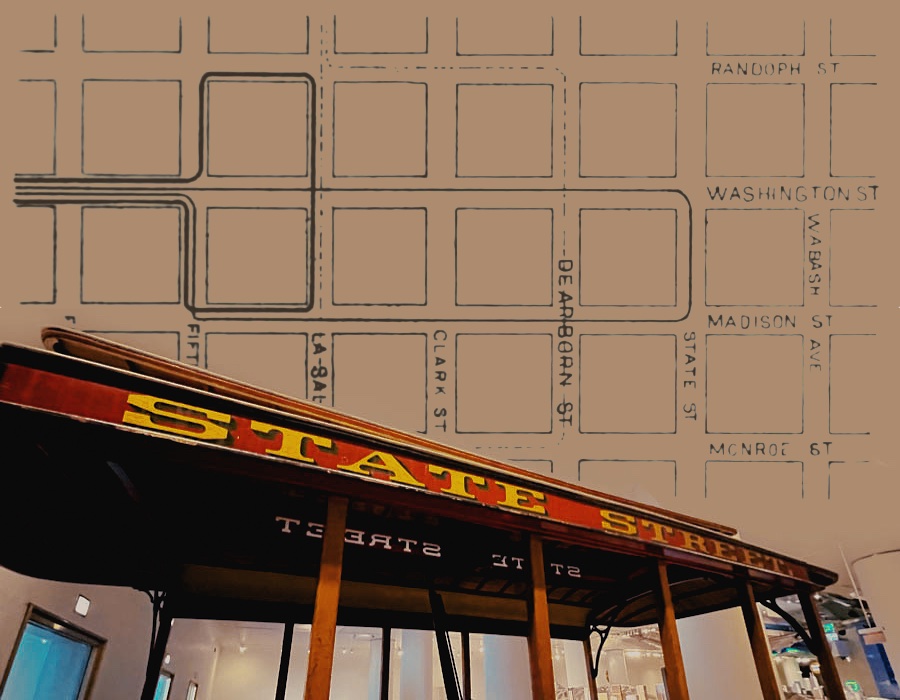
Cables and Cars in the Streets
Chicago, Il / Mar 2023 / image and artwork RWH
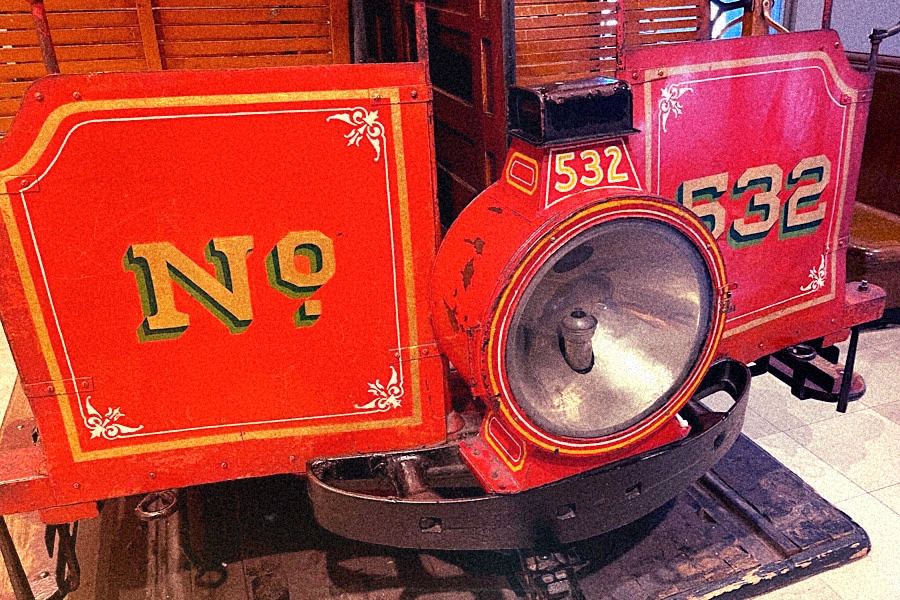
Five Three Two
Chicago, Il / Mar 2023 / RWH
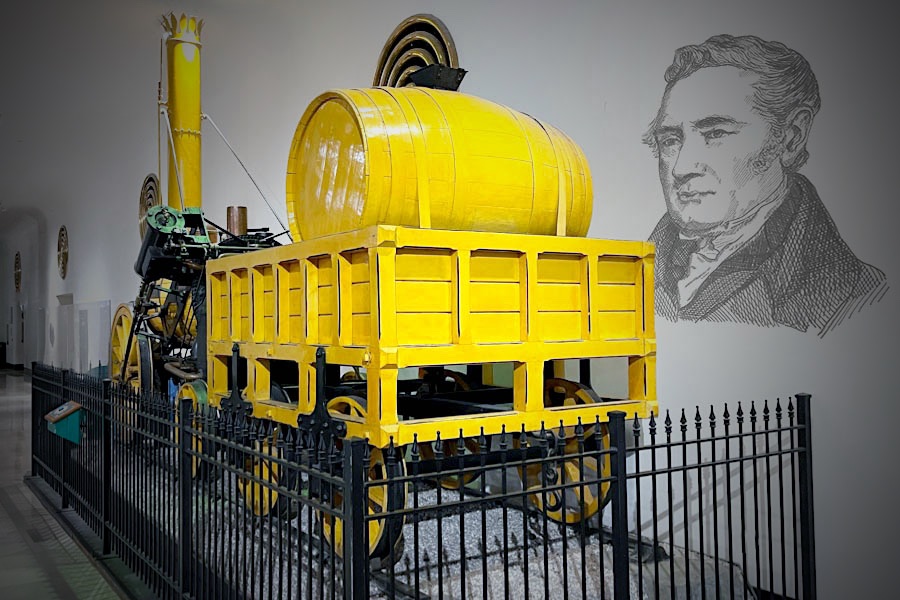
He's a Rocket Man
Chicago, Il / Mar 2023 / image and artwork RWH

All Under One Roof
Chicago, Il / Mar 2023 / image and artwork RWH
Swiss Jolly Ball machine
Chicago, Il / Mar 2023 / RWH
 Snapshots
Snapshots
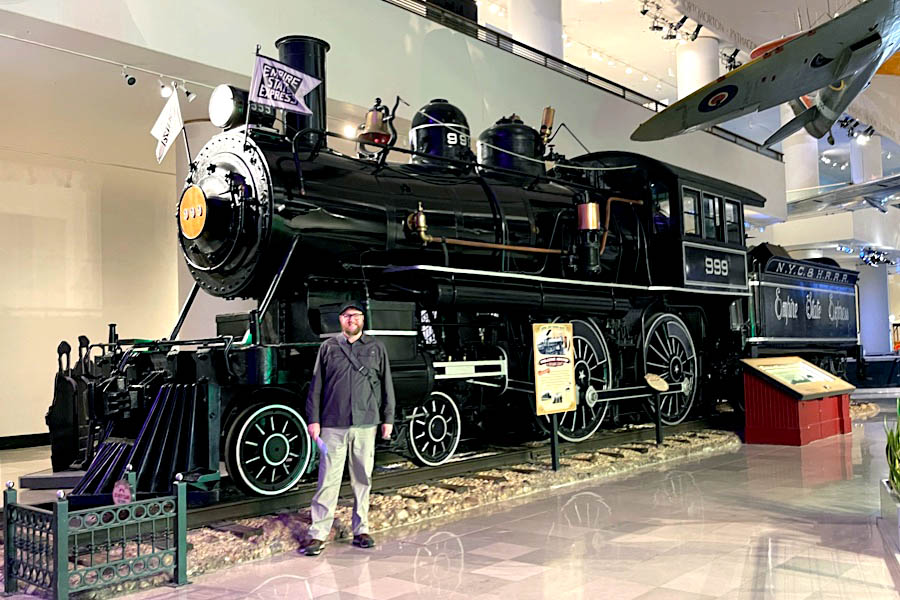
Chicago, Il / Mar 2023 / DKT
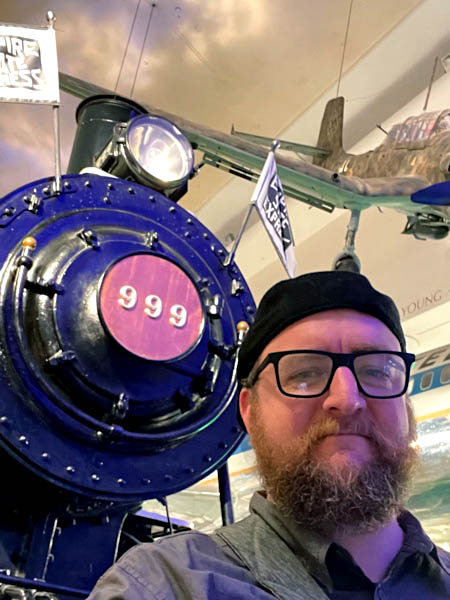
Mar 2023 / RWH
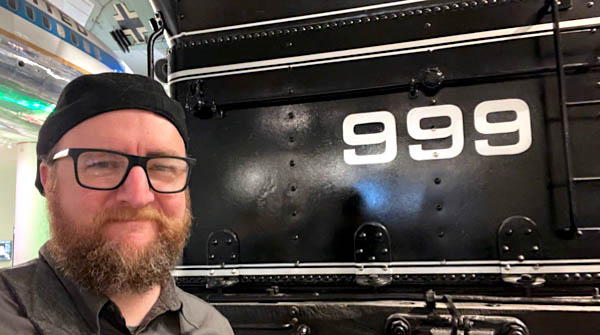
Mar 2023 / RWH
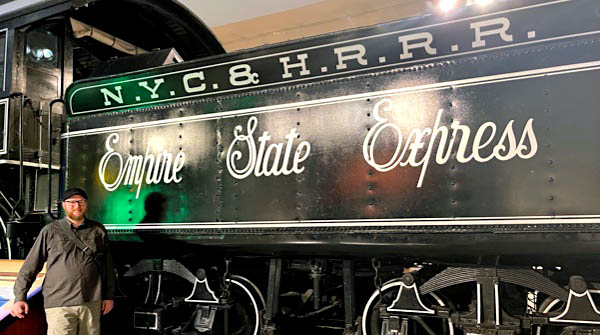
Mar 2023 / RWH
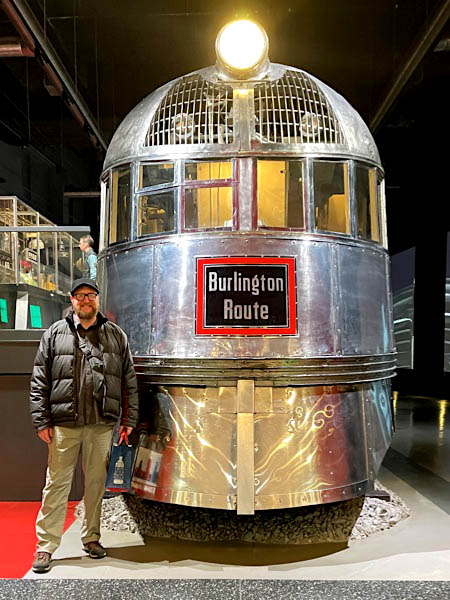
Mar 2023 / DKT
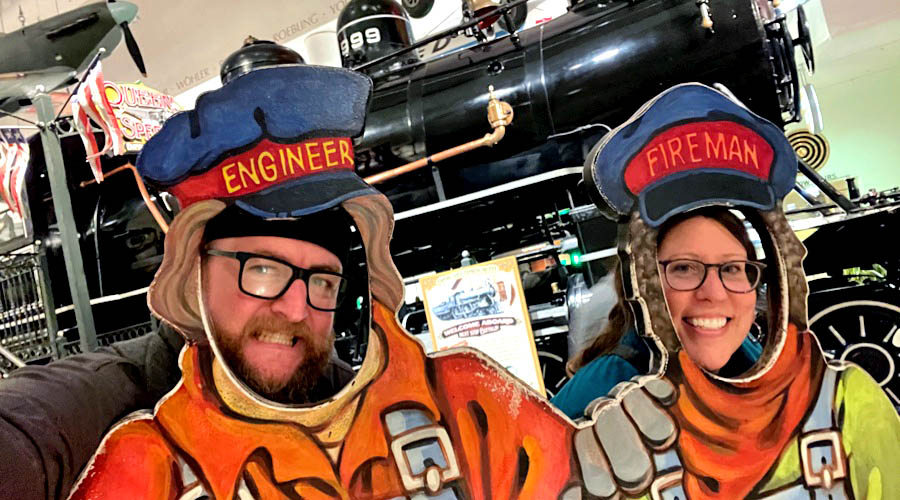
Mar 2023 / RWH
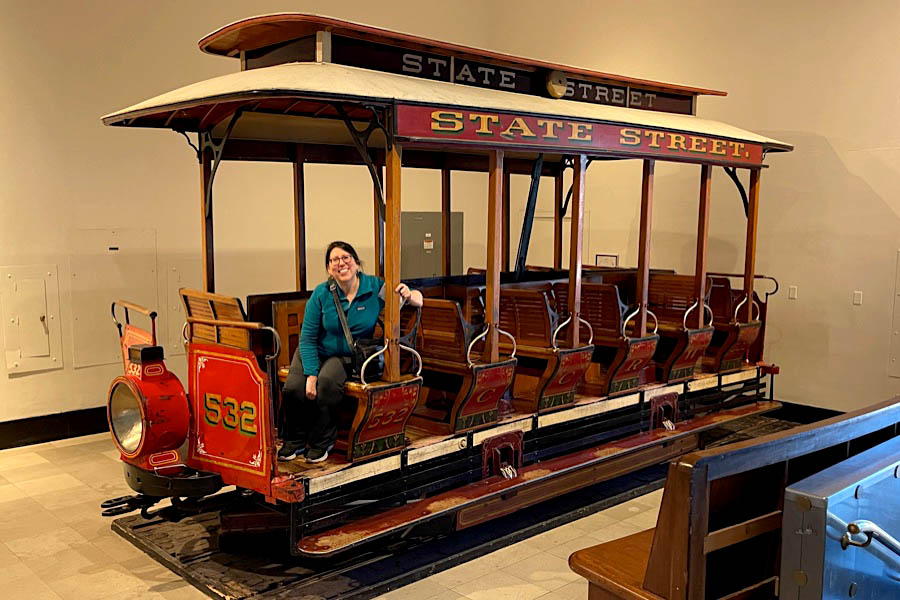
Mar 2023 / RWH
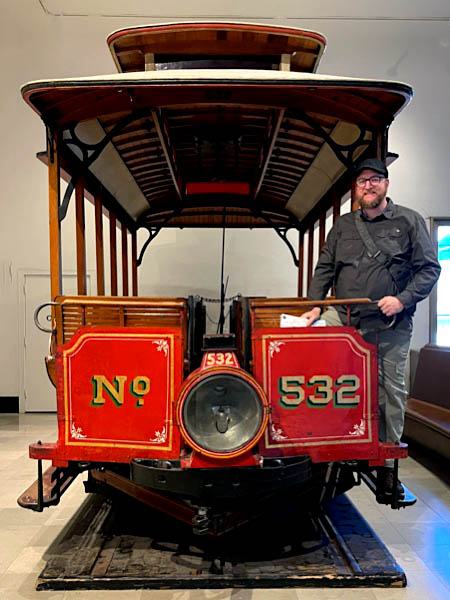
Mar 2023 / DKT
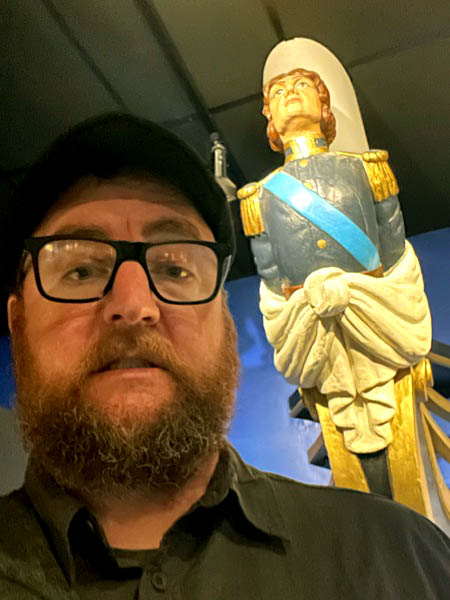
Mar 2023 / RWH
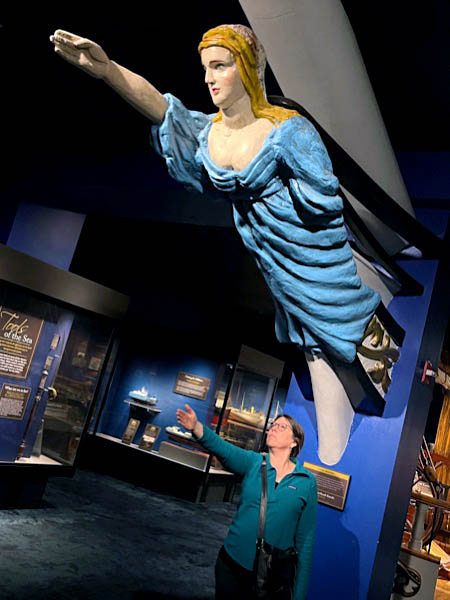
Mar 2023 / RWH

Mar 2023 / RWH
Links / Sources
- Museum of Science and Industry website
- Wikipedia article for Museum of Science and Industry, Chicago
